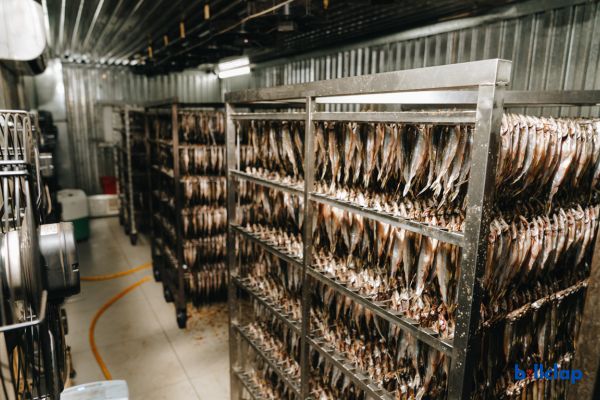
If you're considering starting a small business in a rural or village setting, you're in luck. India’s vast rural population provides a fertile ground for various business opportunities tailored to the unique infrastructure and needs of these areas.
While urban areas often dominate discussions about business ventures, rural regions offer distinct advantages and potential. Businesses that thrive in these settings often align with local resources and needs, such as agriculture-related enterprises.
Starting a business in your own village can be particularly advantageous. The lower capital requirements and reduced investment needed for setting up shop, combined with the familiarity of the local community, can simplify the process. This familiarity often translates to easier organization and smoother operations.
If you’re settled in a rural area and harbor aspirations of entrepreneurship, your local environment might just be the perfect place to turn your business dreams into reality.
Lucrative Business Opportunities for Villages That Are Sure to Benefit You:
1) Organic Farming - Grow and sell organic fruits, vegetables, and grains.
2) Dairy Farming - Produce and sell milk and dairy products like cheese and yogurt.
3) Poultry Farming - Raise chickens for eggs or meat.
4) Fish Farming (Aquaculture) - Cultivate fish for local markets.
5) Beekeeping (Apiculture) - Produce honey and beeswax products.
6)Goat Farming - Breed goats for meat, milk, and wool.
7) Handicrafts - Create and sell traditional crafts and textiles .
8) Herbal Farming - Grow and market medicinal and aromatic plants.
9) Agro-Tourism - Develop farm tours and rural experiences for visitors.
10) Grocery Store - Open a general store offering essentials and local goods.
11) Seed Supply - Provide seeds for crops and plants to local farmers.
12) Village Bakery - Bake and sell bread, cakes, and pastries.
13) Local Restaurant or Eatery - Serve traditional dishes and local cuisine.
14) Rice Mill - Process and mill rice for local consumption.
15) Village Clinic or Pharmacy - Offer medical services and essential medicines.]
16) Animal Feed Production - Manufacture feed for livestock and poultry.
17) Rural Transport Services - Offer transportation for people and goods.
18) Tailoring and Dressmaking - Provide clothing alterations and custom garments.
19) Agri-Equipment Rental - Rent out tractors and other farming machinery.
20) Renewable Energy Solutions - Install solar panels or biogas systems.
21) Craft Beer or Local Brewery - Brew and sell local beer or alcoholic beverages.
22) Event Planning - Organize village festivals, weddings, and events.
23) Rice and Flour Mill - Set up a mill to process rice, flour, and other grains.
24) Educational Services - Offer tutoring or vocational training programs.
25) Laundry Services - Provide washing and ironing services.
26) Woodworking - Create and sell furniture or decorative wooden items.
27) Cold Storage Facility - Store perishable goods like fruits and vegetables.
28) Local Media and Publishing - Start a village newsletter or magazine.
29) Nursery and Garden Center - Sell plants, seeds, and gardening supplies.
30) Wool and Textile Production - Process and sell wool or textile products.
31) Solar Water Pump Installation - Set up solar-powered water pumps for irrigation.
32) Local Craft Brewery - Brew and sell craft beers or fermented beverages.
33) Sustainable Fish Farming - Develop eco-friendly aquaculture practices.
34) Online Retail Store - Sell local products through an e-commerce platform.
35) Wood and Biomass Energy - Provide renewable energy from wood and biomass.
36) Herbal Medicine Production - Create and market herbal remedies.
37) Livestock Breeding - Focus on breeding and selling high-quality livestock.
38) Homemade Pickles and Jams - Produce and sell artisanal preserves.
39) Rural IT Services - Offer tech support, internet services, or digital literacy training.
40) Community Center - Establish a hub for social activities, meetings, and workshops.

In the heart of India’s rural landscape lies a wealth of opportunity for those looking to start a small business. One of the most promising and sustainable ventures is organic farming. Not only does this business idea align perfectly with the needs and strengths of rural areas, but it also promises substantial rewards both financially and environmentally. Here’s why organic farming could be a game-changer for rural entrepreneurs in India.
1. Rising Demand for Organic Produce
The global shift towards healthier lifestyles has increased the demand for organic produce. Indian consumers are becoming more health-conscious and are willing to pay a premium for food that is free from synthetic pesticides and fertilizers. Rural areas, with their abundant land and favorable climate, are ideally positioned to meet this growing demand.
2. Lower Initial Investment
Organic farming typically requires a lower initial investment compared to conventional farming. The primary costs involve acquiring organic seeds and natural fertilizers, which are often less expensive than chemical inputs. Moreover, rural areas often benefit from lower land and labor costs, making it even more feasible to start an organic farm.
3. Access to Natural Resources
Rural areas have an advantage when it comes to organic farming because of their abundant natural resources. With access to fresh water, ample sunlight, and fertile soil, rural farmers can cultivate a variety of organic crops without the need for extensive artificial inputs. This natural environment is conducive to the principles of organic farming, which emphasize sustainability and ecological balance.
4. Enhanced Soil Health and Crop Yield
Organic farming practices focus on maintaining soil health through composting, crop rotation, and green manure. These methods improve soil fertility over time, leading to better crop yields and reduced dependency on chemical fertilizers. Healthier soil also means better resilience against pests and diseases, reducing the need for harmful pesticides.
5. Diversified Income Streams
Organic farming isn’t limited to just fruits and vegetables. Farmers can diversify their income streams by growing organic herbs, spices, and even flowers. Additionally, there is potential for value-added products such as organic jams, pickles, and herbal teas. This diversification can provide a steady income and help mitigate risks associated with crop failure.
6. Support from Government Schemes and NGOs
The Indian government, along with various non-governmental organizations (NGOs), offers support for organic farming initiatives. This support includes subsidies for organic certification, training programs, and financial assistance. Leveraging these resources can help rural entrepreneurs reduce costs and gain access to valuable knowledge and networks.
7. Community and Environmental Benefits
Organic farming contributes to the well-being of the community and the environment. By avoiding harmful chemicals, organic farming helps maintain cleaner water sources and promotes biodiversity. Additionally, organic farms can become community hubs, offering educational opportunities and fostering local markets for fresh produce.
8. Marketing and Distribution Opportunities
With the rise of e-commerce and digital platforms, marketing organic produce has never been easier. Farmers can reach out to urban markets through online marketplaces or set up local farmer’s markets to sell their goods. Building relationships with local shops and restaurants that focus on organic products can also provide a steady customer base.
Getting Started with Organic Farming
Research and Planning: Begin with thorough research on organic farming practices and create a detailed business plan. Consider factors such as crop selection, soil preparation, and pest management.
Training and Certification: Obtain training in organic farming techniques and pursue organic certification to enhance credibility and marketability.
Set Up Your Farm: Prepare your land, acquire organic seeds, and implement sustainable farming practices. Invest in quality compost and natural fertilizers.
Market Your Produce: Develop a marketing strategy to promote your organic produce. Utilize social media, local markets, and online platforms to reach potential customers.
Monitor and Adapt: Continuously monitor your farm’s performance and adapt your practices based on feedback and changing market trends.
Conclusion
Organic farming represents a golden opportunity for rural entrepreneurs in India. With its alignment with natural resources, lower initial investment, and increasing market demand, it’s a venture that not only promises financial returns but also supports a sustainable and healthier environment. By embracing organic farming, rural areas can tap into a thriving market while contributing positively to their communities and the planet.
2. Dairy Farming: A Lucrative Small Business Idea for Rural Areas in India

In the expansive rural regions of India, where agriculture and traditional livelihoods form the backbone of the community, dairy farming presents a promising and profitable business opportunity. With its rich tradition and strong market demand, dairy farming not only supports local economies but also contributes to sustainable development. Here’s why starting a dairy farm could be an excellent venture for rural entrepreneurs.
1. Consistent Demand for Dairy Products
Dairy products such as milk, cheese, yogurt, and butter are staple items in Indian households. The consistent and growing demand for these products ensures a steady market for dairy farmers. As urban populations expand and consumer preferences shift towards healthier, protein-rich diets, the need for high-quality dairy products continues to rise.
2. Utilization of Available Resources
Rural areas often have ample land and resources that are ideal for dairy farming. With access to grazing pastures and local fodder, rural farmers can raise dairy cattle more effectively. Additionally, the lower cost of land and labor in rural settings makes it easier to set up and manage a dairy farm.
3. Lower Initial Investment
Starting a dairy farm generally requires a moderate initial investment compared to other agricultural ventures. The primary costs include purchasing dairy cattle, setting up housing and milking facilities, and acquiring feed and veterinary services. In rural areas, the cost of these inputs can be relatively lower, making dairy farming an accessible option for local entrepreneurs.
4. Opportunities for Value Addition
Dairy farming offers various opportunities for value addition. Farmers can process milk into products such as cheese, yogurt, paneer, and ghee. These value-added products not only enhance profitability but also provide options to cater to diverse consumer preferences. Processing facilities can be established at a small scale, allowing farmers to diversify their income streams.
5. Sustainability and Soil Health
Integrating dairy farming with crop production can lead to sustainable agricultural practices. The manure from dairy cattle can be used as a natural fertilizer, enhancing soil fertility and reducing the need for chemical inputs. This symbiotic relationship supports both dairy farming and crop production, contributing to overall farm sustainability.
6. Government Support and Schemes
The Indian government provides various schemes and subsidies to support dairy farming. These include financial assistance for purchasing dairy cattle, setting up infrastructure, and improving milk production and quality. Leveraging these government schemes can help reduce initial costs and improve the viability of your dairy farming venture.
7. Community Engagement and Economic Impact
Dairy farming can positively impact rural communities by creating jobs and supporting local economies. By sourcing feed and other supplies locally, dairy farms contribute to the economic development of the region. Additionally, dairy farming can lead to the establishment of cooperatives and community-based enterprises, fostering collaboration and shared growth.
Getting Started with Dairy Farming
Research and Planning: Conduct thorough research on dairy farming practices and develop a detailed business plan. Consider factors such as breed selection, feeding practices, and disease management.
Infrastructure Setup: Invest in essential infrastructure including cattle housing, milking equipment, and storage facilities. Ensure that the setup meets the required standards for hygiene and animal welfare.
Purchase of Dairy Cattle: Choose healthy and high-yielding breeds of dairy cattle. It’s crucial to select breeds that are well-suited to the local climate and have good milk production potential.
Feed and Nutrition Management: Develop a balanced feeding plan to ensure the health and productivity of your dairy cattle. Utilize local feed resources and supplement with necessary nutrients.
Health and Veterinary Care: Implement a robust health management program. Regular veterinary check-ups, vaccinations, and disease prevention measures are essential for maintaining a healthy herd.
Marketing Your Products: Create a marketing strategy to promote your dairy products. Utilize local markets, establish partnerships with retailers, and consider online platforms to reach a wider audience.
Continuous Improvement: Monitor your dairy farm’s performance and seek opportunities for improvement. Stay updated with the latest practices and technologies in dairy farming to enhance productivity and profitability.
Conclusion
Dairy farming stands out as a highly viable and rewarding business opportunity for rural areas in India. With its consistent demand, lower initial investment, and potential for value addition, dairy farming offers a path to economic growth and sustainability. By leveraging local resources, government support, and effective marketing strategies, rural entrepreneurs can build successful dairy enterprises that benefit both their businesses and their communities.
3. Poultry Farming: A Promising Small Business Idea for Rural Areas in India

In the diverse rural landscapes of India, poultry farming emerges as a highly advantageous small business idea. With its potential for profitability, low initial investment, and alignment with local resources, poultry farming offers rural entrepreneurs a viable path to economic success and community development. Here’s why poultry farming could be an excellent venture for those in rural areas.
1. Steady Market Demand
Poultry products, such as chicken meat and eggs, are staples in the Indian diet. The constant demand for these items ensures a reliable market for poultry farmers. As dietary preferences evolve and urbanization increases, the need for affordable, protein-rich foods continues to grow, creating a steady demand for poultry products.
2. Affordable Initial Investment
Compared to other forms of livestock farming, poultry farming requires a relatively lower initial investment. The costs involved primarily include purchasing chicks, setting up housing (coops or pens), and buying feed and equipment. In rural areas, where land and labor costs are generally lower, this initial investment can be quite manageable.
3. Utilization of Existing Resources
Rural areas offer several advantages for poultry farming. The availability of space, local feed resources, and a conducive climate can support successful poultry operations. Additionally, the lower cost of land and labor in rural settings helps reduce overall expenses, making poultry farming a viable option for local entrepreneurs.
4. Quick Returns and High Productivity
Poultry farming is known for its relatively quick turnaround times. Broiler chickens, for example, can be ready for market in as little as six to eight weeks, while layers start producing eggs within five to six months. This rapid growth and productivity can lead to faster returns on investment compared to other livestock ventures.
5. Opportunities for Value Addition
Poultry farming offers various opportunities for value addition. Farmers can process poultry meat into products like sausages, nuggets, and ready-to-cook items, expanding their market reach. Additionally, by producing and selling organic or free-range poultry, farmers can cater to niche markets and command higher prices.
6. Government Support and Schemes
The Indian government offers various schemes and subsidies to support poultry farming, including financial assistance for infrastructure development, disease management, and breed improvement. Utilizing these government programs can help reduce startup costs and enhance the viability of poultry farming operations.
Getting Started with Poultry Farming
Research and Planning: Conduct detailed research on poultry farming practices and create a comprehensive business plan. Consider aspects such as breed selection, housing requirements, and feeding strategies.
Infrastructure Setup: Invest in essential infrastructure, including poultry housing, feeding systems, and waste management facilities. Ensure that the setup provides adequate space, ventilation, and hygiene.
Purchase of Poultry: Choose high-quality poultry breeds that suit your farming goals. Broilers are typically raised for meat, while layers are kept for egg production. Ensure that the poultry is sourced from reputable suppliers.
Feed and Nutrition Management: Develop a balanced feeding plan to support optimal growth and egg production. Utilize local feed resources and supplements as needed to meet the nutritional requirements of your poultry.
Health and Disease Management: Implement a comprehensive health management program. Regular vaccinations, disease monitoring, and veterinary care are crucial for maintaining a healthy flock and preventing outbreaks.
Marketing Your Products: Develop a marketing strategy to promote your poultry products. Explore local markets, build relationships with retailers, and consider online sales channels to expand your reach.
Continuous Improvement: Regularly assess your poultry farm’s performance and seek opportunities for improvement. Stay informed about the latest advancements in poultry farming to enhance productivity and profitability.
Conclusion
Poultry farming stands out as a highly viable and rewarding business opportunity for rural areas in India. With its steady demand, affordable initial investment, and quick returns, poultry farming offers a promising path to economic success and community development. By leveraging local resources, government support, and effective marketing strategies, rural entrepreneurs can build thriving poultry enterprises that benefit both their businesses and their communities.
4. Fish Farming: A Thriving Small Business Idea for Rural Areas in India

In the picturesque rural regions of India, where water bodies and natural resources abound, fish farming offers a compelling and profitable small business opportunity. With its potential for sustainability, low initial investment, and alignment with local environmental conditions, fish farming presents a viable option for rural entrepreneurs. Here’s why fish farming could be an excellent venture for those in rural areas.
1. Growing Market Demand
Fish and seafood are integral parts of diets across India, and the demand for fresh, high-quality fish is consistently strong. As urbanization and dietary preferences shift towards healthier, protein-rich options, the market for fish is expanding. Fish farming can cater to this growing demand, providing a steady source of income for rural entrepreneurs.
2. Utilization of Local Resources
Rural areas often have access to abundant water resources, which are crucial for fish farming. Ponds, lakes, and rivers can be used to set up fish farming operations. Additionally, the availability of local feed resources and low land costs in rural regions further supports the feasibility of fish farming.
3. Low Initial Investment
Starting a fish farming venture generally requires a relatively modest initial investment compared to other types of aquaculture. The main costs involve setting up fish tanks or ponds, acquiring fingerlings (young fish), and purchasing feed and equipment. In rural areas, the lower cost of land and labor helps reduce these initial expenses.
4. Quick Growth and High Yield
Fish farming is known for its efficient production cycles. Many fish species, such as tilapia and catfish, have rapid growth rates and can be harvested in a relatively short time. This quick turnaround allows for multiple production cycles within a year, leading to higher yields and faster returns on investment.
5. Opportunities for Value Addition
Fish farming offers various opportunities for value addition. Farmers can process fish into products such as fillets, frozen fish, or ready-to-cook meals. Additionally, producing specialty or organic fish can cater to niche markets and command premium prices.
6. Government Support and Schemes
The Indian government supports fish farming through various schemes and subsidies aimed at promoting aquaculture. These include financial assistance for setting up infrastructure, improving fish stock quality, and implementing best practices. Utilizing these programs can help offset startup costs and enhance the sustainability of your fish farming venture.
Getting Started with Fish Farming
Research and Planning: Conduct thorough research on fish farming practices and develop a detailed business plan. Consider factors such as fish species selection, pond or tank construction, and water management.
Infrastructure Setup: Invest in the necessary infrastructure, including ponds or tanks, water filtration systems, and aeration equipment. Ensure that the setup provides optimal conditions for fish health and growth.
Purchase of Fingerlings: Choose healthy and high-quality fingerlings from reputable suppliers. Select fish species that are well-suited to your local climate and water conditions.
Feed and Nutrition Management: Develop a balanced feeding plan to support the growth and health of your fish. Utilize local feed resources and supplements as needed to meet the nutritional requirements of your fish.
Health and Disease Management: Implement a comprehensive health management program. Regular monitoring, disease prevention, and prompt veterinary care are essential for maintaining a healthy fish population.
Marketing Your Products: Create a marketing strategy to promote your fish products. Explore local markets, establish partnerships with retailers, and consider online sales channels to expand your reach.
Continuous Improvement: Regularly assess your fish farming operations and seek opportunities for improvement. Stay informed about the latest advancements in aquaculture to enhance productivity and profitability.
Conclusion
Fish farming presents a highly viable and rewarding business opportunity for rural areas in India. With its growing market demand, efficient production cycles, and potential for value addition, fish farming offers a promising path to economic success and community development. By leveraging local resources, government support, and effective marketing strategies, rural entrepreneurs can build successful fish farming enterprises that benefit both their businesses and their communities.
5. Beekeeping: A Sweet Small Business Idea for Rural Areas in India

In the lush and diverse rural landscapes of India, beekeeping, or apiculture, offers an attractive and profitable business opportunity. With its low initial investment, environmental benefits, and growing market demand for honey and related products, beekeeping is an ideal venture for rural entrepreneurs. Here’s why starting a beekeeping business could be a successful and rewarding endeavor in rural areas.
1. Growing Demand for Honey
Honey is a popular and versatile product used in cooking, baking, and natural medicine. The increasing consumer preference for natural and organic products drives the demand for high-quality honey. As urban and rural consumers alike seek healthier alternatives to processed sugars, beekeeping provides a valuable opportunity to meet this growing market need.
2. Utilization of Existing Resources
Rural areas often have abundant natural resources, such as flowering plants and trees, which are essential for successful beekeeping. The availability of diverse floral sources supports the production of high-quality honey and helps maintain healthy bee colonies. Additionally, rural settings typically offer lower land and labor costs, making it easier to start and manage a beekeeping operation.
3. Low Initial Investment
Beekeeping generally requires a relatively modest initial investment compared to other agricultural ventures. The primary costs involve purchasing beehives, bees (nucleus colonies or packages), and necessary equipment such as protective gear, hive tools, and honey extractors. In rural areas, the lower cost of these inputs and infrastructure helps make beekeeping an accessible and affordable business option.
4. Environmental and Agricultural Benefits
Beekeeping provides significant environmental and agricultural benefits. Bees are essential pollinators, contributing to the health and productivity of local crops and plants. By supporting pollination, beekeeping can enhance agricultural yields and promote biodiversity. Additionally, responsible beekeeping practices help preserve the health of bee populations and contribute to ecological balance.
5. Opportunities for Value Addition
In addition to honey, beekeeping offers opportunities for producing and selling a range of value-added products. These include beeswax, which can be used in candles, cosmetics, and skincare products, as well as propolis and royal jelly, both of which have health and wellness benefits. Diversifying into these products can increase profitability and attract niche markets.
6. Government Support and Schemes
The Indian government provides support for beekeeping through various schemes and subsidies aimed at promoting apiculture. These include financial assistance for purchasing equipment, improving hive management practices, and training programs for beekeepers. Leveraging these resources can help reduce startup costs and enhance the success of your beekeeping venture.
Getting Started with Beekeeping
Research and Planning: Conduct thorough research on beekeeping practices and develop a detailed business plan. Consider aspects such as hive management, bee health, and honey extraction techniques.
Infrastructure Setup: Invest in the necessary beekeeping equipment, including beehives, protective gear, and extraction tools. Ensure that your setup provides a safe and conducive environment for your bee colonies.
Purchase of Bees: Obtain bees from reputable suppliers. Choose suitable bee species for your local climate and floral resources. Start with a manageable number of hives and expand as you gain experience.
Hive Management: Implement best practices for hive management, including regular inspections, disease prevention, and proper feeding. Monitor the health and productivity of your bee colonies to ensure optimal honey production.
Harvesting and Processing: Develop a plan for harvesting and processing honey and other bee products. Ensure that your processing methods adhere to hygiene and quality standards to maintain product integrity.
Marketing Your Products: Create a marketing strategy to promote your honey and other bee products. Utilize local markets, online sales platforms, and direct-to-consumer channels to reach a broader audience.
Conclusion
Beekeeping presents a highly viable and rewarding business opportunity for rural areas in India. With its growing market demand, low initial investment, and environmental benefits, beekeeping offers a path to economic success and community development. By leveraging local resources, government support, and effective marketing strategies, rural entrepreneurs can build thriving beekeeping enterprises that benefit both their businesses and their communities.
6. Goat Farming: A Profitable Small Business Idea for Rural Areas in India

In the vibrant and resource-rich rural areas of India, goat farming stands out as a highly promising and profitable business venture. With its moderate initial investment, quick returns, and alignment with local agricultural practices, goat farming offers rural entrepreneurs a viable path to economic success. Here’s why starting a goat farming business could be an excellent opportunity for those in rural regions.
1. Strong Market Demand
Goat meat, or chevon, is a popular and widely consumed meat in India. It is valued for its taste, tenderness, and lower fat content compared to other meats. The demand for goat meat remains consistently high, especially in both urban and rural markets. Additionally, goat milk and goat-related products, such as cheese and yogurt, are gaining popularity, further expanding market opportunities.
2. Utilization of Existing Resources
Rural areas often provide the ideal conditions for goat farming. Goats are hardy animals that can thrive on various types of vegetation, including shrubs and weeds that may be less suitable for other livestock. The availability of grazing land and local fodder resources makes rural settings well-suited for raising goats, allowing farmers to make efficient use of available resources.
3. Moderate Initial Investment
Starting a goat farming operation typically requires a moderate initial investment compared to other forms of livestock farming. The primary costs include purchasing goats, building appropriate housing (shelters), and acquiring feed and veterinary supplies. In rural areas, where land and labor costs are generally lower, these initial expenses can be more manageable, making goat farming an accessible option.
4. Quick Returns and High Reproduction Goats have relatively short gestation periods and high reproduction rates, leading to quicker returns on investment. Female goats, or does, typically give birth to twins or triplets, and kids (young goats) can be sold at a young age for meat or kept for breeding. This rapid turnover allows farmers to quickly scale up their operations and increase profitability.
5. Opportunities for Value Addition
In addition to selling goat meat, goat farming offers various opportunities for value addition. Farmers can produce and market goat milk, cheese, yogurt, and other dairy products. Additionally, goat hides can be processed into leather products. By diversifying into these products, farmers can capture niche markets and enhance overall profitability.
6. Government Support and Schemes
The Indian government supports livestock farming, including goat farming, through various schemes and subsidies. These programs provide financial assistance for purchasing livestock, improving infrastructure, and implementing best practices in animal husbandry. Leveraging these resources can help reduce startup costs and improve the success of your goat farming venture.
Getting Started with Goat Farming
Research and Planning: Conduct thorough research on goat farming practices and develop a detailed business plan. Consider factors such as breed selection, housing requirements, and feeding strategies.
Infrastructure Setup: Invest in essential infrastructure, including goat shelters, fencing, and feeding systems. Ensure that the setup provides adequate space, ventilation, and protection from the elements.
Purchase of Goats: Select high-quality goat breeds that are suited to your local climate and farming goals. Choose healthy animals from reputable suppliers and start with a manageable number of goats.
Feed and Nutrition Management: Develop a balanced feeding plan to ensure the health and productivity of your goats. Utilize local feed resources and supplements as needed to meet their nutritional requirements.
Health and Disease Management: Implement a comprehensive health management program, including regular veterinary check-ups, vaccinations, and disease prevention measures. Proper health care is essential for maintaining a productive and healthy herd.
Marketing Your Products: Develop a marketing strategy to promote your goat meat and other products. Explore local markets, build relationships with retailers, and consider online sales channels to expand your reach.
Continuous Improvement: Regularly assess your goat farming operations and seek opportunities for improvement. Stay informed about the latest advancements in goat farming and animal husbandry to enhance productivity and profitability.
Conclusion
Goat farming represents a highly viable and rewarding business opportunity for rural areas in India. With its strong market demand, moderate initial investment, and rapid returns, goat farming offers a promising path to economic success and community development. By leveraging local resources, government support, and effective marketing strategies, rural entrepreneurs can build successful goat farming enterprises that benefit both their businesses and their communities.
7.Handicraft Business: A Creative Small Business Idea for Rural Areas in India

In the culturally rich and diverse rural regions of India, handicraft production offers an inspiring and profitable business opportunity. With its potential for low initial investment, strong market demand, and the ability to leverage local skills and materials, handicraft businesses can thrive in rural settings. Here’s why starting a handicraft business could be an excellent venture for those in rural areas.
1. Growing Market for Handmade Products
Handcrafted items have seen a resurgence in popularity due to their uniqueness, quality, and the growing consumer preference for sustainable and ethically produced goods. Both domestic and international markets appreciate handmade products, ranging from textiles and pottery to jewelry and woodwork. This growing trend creates a robust market for handicraft products.
2. Utilization of Local Skills and Materials
Rural areas are often home to skilled artisans who possess traditional crafting techniques passed down through generations. These skills, combined with locally available materials such as clay, bamboo, wood, and textiles, provide a strong foundation for a successful handicraft business. Leveraging these existing skills and resources can reduce initial costs and enhance the authenticity of your products.
3. Low Initial Investment
Starting a handicraft business generally requires a modest initial investment compared to other types of enterprises. The primary costs include purchasing raw materials, tools, and equipment, as well as setting up a workspace. In rural areas, where labor and material costs are typically lower, these initial expenses can be manageable, making handicraft businesses an accessible option.
4. Cultural and Artistic Value
Handicrafts often reflect the rich cultural heritage and artistic traditions of rural communities. By promoting and preserving these traditional crafts, you not only create a unique product but also contribute to the cultural preservation and appreciation of local art forms. This cultural value can be a strong selling point in the marketplace.
5. Opportunities for Value Addition
Handicraft businesses offer numerous opportunities for value addition. Artisans can expand their product lines to include a variety of items, such as home décor, fashion accessories, and gift items. Additionally, creating custom or personalized products can attract niche markets and increase profitability.
6. Government Support and Schemes
The Indian government supports handicraft industries through various schemes and subsidies aimed at promoting traditional crafts and supporting artisans. These programs may include financial assistance, training workshops, and marketing support. Utilizing these resources can help enhance the success of your handicraft business and expand its reach.
Getting Started with Handicraft Business
Research and Planning: Conduct thorough research on the handicraft market and develop a detailed business plan. Identify your target market, select your product range, and determine pricing strategies.
Infrastructure Setup: Set up a workspace for your handicraft production. Invest in necessary tools and equipment, and organize your materials and supplies efficiently.
Skill Development: If necessary, invest in training or workshops to enhance your crafting skills or learn new techniques. Continual skill development is crucial for producing high-quality products.
Production and Quality Control: Establish a production process that ensures the consistent quality of your handicraft products. Implement quality control measures to maintain high standards and meet customer expectations.
Marketing Your Products: Create a marketing strategy to promote your handicraft products. Utilize local markets, craft fairs, and online platforms to reach potential customers. Develop a strong brand identity and leverage social media to build a loyal customer base.
Sales and Distribution: Develop efficient sales and distribution channels to ensure timely delivery of your products. Explore various sales avenues, including retail stores, online marketplaces, and direct sales.
Conclusion
Handicraft businesses represent a highly viable and rewarding opportunity for rural areas in India. With its growing market demand, low initial investment, and potential for cultural and artistic expression, handicraft production offers a path to economic success and community development. By leveraging local skills, government support, and effective marketing strategies, rural entrepreneurs can build thriving handicraft enterprises that celebrate their heritage and contribute to their communities.
8.Herbal Farming: A Promising Small Business Idea for Rural Areas in India

In the lush and diverse rural regions of India, herbal farming offers a lucrative and sustainable business opportunity. With its potential for low initial investment, alignment with local agricultural practices, and growing demand for natural remedies and wellness products, herbal farming can be an excellent venture for rural entrepreneurs. Here’s why starting a herbal farming business could be a highly rewarding endeavor in rural areas.
1. Rising Demand for Herbal Products
There is a growing global trend towards natural and organic products, driven by increasing health awareness and the desire for sustainable living. Herbal products, including medicinal herbs, essential oils, and natural supplements, are in high demand for their therapeutic benefits and natural properties. This rising demand provides a strong market opportunity for herbal farming.
2. Utilization of Local Resources
Rural areas often have favorable conditions for growing a wide variety of medicinal and aromatic plants. The availability of arable land, a favorable climate, and access to natural water sources are key factors that make rural settings ideal for herbal farming. Additionally, local knowledge and traditional farming practices can be leveraged to cultivate high-quality herbal crops.
3. Low Initial Investment
Starting a herbal farming business generally requires a modest initial investment compared to other types of agricultural ventures. The primary costs include purchasing seeds or seedlings, preparing the land, and investing in basic farming tools and infrastructure. In rural areas, where land and labor costs are typically lower, these initial expenses can be manageable.
4. Diverse Crop Options
Herbal farming offers a wide range of crop options, including medicinal herbs like turmeric, ginger, and tulsi, as well as aromatic plants such as lavender and rosemary. This diversity allows farmers to choose crops that are well-suited to their local climate and soil conditions, enabling them to maximize their yields and profits.
5. Opportunities for Value Addition
In addition to selling raw herbal products, herbal farming provides opportunities for value addition. Farmers can process herbs into essential oils, teas, tinctures, and herbal remedies. Creating value-added products can enhance profitability and attract niche markets interested in natural health and wellness solutions.
6. Government Support and Schemes
The Indian government supports herbal farming through various schemes and subsidies aimed at promoting the cultivation of medicinal and aromatic plants. These programs may include financial assistance for infrastructure development, training workshops, and research support. Utilizing these resources can help reduce startup costs and improve the success of your herbal farming venture.
Getting Started with Herbal Farming
Research and Planning: Conduct thorough research on herbal farming practices and develop a detailed business plan. Identify suitable herbal crops for your local climate, plan your planting and harvesting schedules, and determine your market strategy.
Infrastructure Setup: Prepare your land for cultivation, including soil preparation and irrigation systems. Invest in basic farming tools and equipment, and set up storage facilities for harvested herbs.
Selection of Herbs: Choose high-quality seeds or seedlings for the herbal crops you plan to grow. Select varieties that are well-suited to your soil and climate conditions and align with market demand.
Cultivation and Management: Implement best practices for growing and managing your herbal crops. This includes soil management, pest control, and regular monitoring of plant health. Ensure that your farming practices are sustainable and environmentally friendly.
Harvesting and Processing: Develop a plan for harvesting and processing your herbs. Proper harvesting techniques and processing methods are essential for maintaining the quality and potency of your herbal products.
Marketing Your Products: Create a marketing strategy to promote your herbal products. Explore local markets, establish partnerships with health stores and distributors, and consider online sales channels to reach a wider audience.
Conclusion
Herbal farming presents a highly viable and rewarding business opportunity for rural areas in India. With its rising market demand, low initial investment, and potential for value addition, herbal farming offers a promising path to economic success and community development. By leveraging local resources, government support, and effective marketing strategies, rural entrepreneurs can build thriving herbal farming enterprises that benefit both their businesses and their communities.
9.Agro-Tourism: A Flourishing Small Business Idea for Rural Areas in India

In the scenic and culturally rich rural regions of India, agro-tourism offers an exciting and profitable business opportunity. By combining agriculture with tourism, agro-tourism allows rural entrepreneurs to showcase their local heritage, provide unique experiences, and generate additional income. Here’s why starting an agro-tourism venture could be a highly rewarding endeavor in rural areas.
1. Growing Interest in Rural and Eco-Tourism
There is a rising global trend towards rural and eco-tourism, driven by travelers seeking authentic, immersive experiences and a connection to nature. Agro-tourism fits perfectly within this trend, offering visitors the chance to explore agricultural practices, experience rural life, and enjoy farm-fresh products. This growing interest in experiential travel creates a strong market for agro-tourism ventures.
2. Utilization of Existing Agricultural Resources
Rural areas are naturally equipped with agricultural resources and picturesque landscapes that are ideal for agro-tourism. Farmers can leverage their existing farms, crops, and livestock to create engaging and educational experiences for visitors. By showcasing local farming practices, traditional techniques, and regional produce, you can offer unique attractions that highlight the charm of rural life.
3. Low Initial Investment
Starting an agro-tourism business often requires a relatively modest initial investment compared to other types of tourism ventures. The primary costs involve developing visitor facilities, such as accommodation, dining areas, and activity spaces, as well as marketing and promotion. In rural areas, where land and labor costs are typically lower, these initial expenses can be more manageable.
4. Diverse Experience Offerings
Agro-tourism offers a wide range of activities and experiences that can attract various types of visitors. These might include farm tours, fruit and vegetable picking, cooking classes, traditional craft workshops, and educational programs about sustainable farming. By diversifying your offerings, you can appeal to different interests and enhance the overall appeal of your agro-tourism business.
5. Opportunities for Value Addition
Agro-tourism provides numerous opportunities for value addition. Farmers can offer farm-fresh products for sale, such as fruits, vegetables, dairy products, and artisanal goods. Additionally, creating themed events, seasonal festivals, or farm stays can attract more visitors and increase revenue. Developing unique, memorable experiences can set your agro-tourism venture apart from competitors.
6. Government Support and Schemes
The Indian government promotes tourism and rural development through various schemes and subsidies that can support agro-tourism ventures. These programs may include financial assistance for infrastructure development, training programs, and promotional support. Taking advantage of these resources can help reduce startup costs and enhance the success of your agro-tourism business.
Getting Started with Agro-Tourism
Research and Planning: Conduct thorough research on agro-tourism trends and develop a comprehensive business plan. Identify your target market, design your visitor experiences, and plan your infrastructure needs.
Infrastructure Development: Invest in the necessary infrastructure to accommodate visitors, such as lodging, dining areas, and activity spaces. Ensure that your facilities are comfortable, well-maintained, and aligned with the theme of your agro-tourism venture.
Experience Design: Create engaging and educational experiences that showcase your agricultural practices and local culture. Develop a range of activities that cater to different interests and provide visitors with memorable experiences.
Marketing and Promotion: Develop a marketing strategy to promote your agro-tourism business. Utilize online platforms, social media, and local partnerships to reach potential visitors. Highlight the unique aspects of your farm and the benefits of agro-tourism in your promotional materials.
Visitor Management: Implement effective visitor management practices to ensure a positive experience for your guests. Provide excellent customer service, maintain clean and safe facilities, and gather feedback to continuously improve your offerings.
Community Engagement: Engage with the local community to build support for your agro-tourism venture. Collaborate with local artisans, farmers, and businesses to enhance your offerings and create a sense of community involvement.
Continuous Improvement: Regularly assess your business performance and seek opportunities for improvement. Stay informed about industry trends, visitor preferences, and new developments in agro-tourism to keep your offerings fresh and relevant.
Conclusion
Agro-tourism represents a highly viable and rewarding business opportunity for rural areas in India. With its growing market demand, low initial investment, and potential for diverse experiences, agro-tourism offers a path to economic success and community development. By leveraging local resources, government support, and effective marketing strategies, rural entrepreneurs can build thriving agro-tourism enterprises that celebrate rural heritage and contribute to their communities.
10.Grocery Store: A Lucrative Small Business Idea for Rural Areas in India

In the vibrant and close-knit communities of rural India, opening a grocery store can be a highly profitable and impactful business opportunity. With its essential role in daily life, the grocery store business caters to the fundamental needs of the local population while offering the potential for steady revenue. Here’s why starting a grocery store in rural areas can be an excellent venture.
1. Steady Demand for Essential Goods
Grocery stores fulfill a fundamental need by providing everyday essentials such as food, beverages, cleaning supplies, and personal care products. In rural areas, where access to such goods may be limited, a well-stocked grocery store can quickly become a central hub for the community. This steady demand for essential items ensures a consistent flow of customers and stable revenue.
2. Utilization of Local Resources
Rural areas often have access to local produce and agricultural products, which can be a significant advantage for a grocery store. By sourcing products from nearby farmers and suppliers, you can offer fresh, locally-produced goods to your customers. This not only supports local agriculture but also differentiates your store with unique and fresh offerings.
3. Low Initial Investment
Starting a grocery store typically requires a moderate initial investment compared to other types of businesses. The primary costs include leasing or purchasing a retail space, purchasing initial inventory, and setting up basic store fixtures and equipment. In rural areas, where property and labor costs are generally lower, these initial expenses can be more manageable, making it a viable business option.
4. Diverse Product Range
A grocery store offers the flexibility to stock a wide range of products, including staple foods, snacks, beverages, and household goods. This diversity allows you to cater to various customer needs and preferences. Additionally, you can introduce specialty items or regional products to attract more customers and create a unique shopping experience.
5. Opportunities for Value Addition
In addition to selling standard grocery items, there are opportunities for value addition. Consider offering services such as home delivery, bulk purchase discounts, or special promotions. You could also explore adding a small section for local handicrafts, fresh bakery items, or ready-to-eat meals to enhance your store’s appeal and increase sales.
6. Government Support and Schemes
The Indian government supports small businesses, including grocery stores, through various schemes and subsidies. These programs may include financial assistance, training, and resources to help small retailers get started and succeed. Leveraging these resources can help reduce startup costs and improve the success of your grocery store.
Getting Started with a Grocery Store
Research and Planning: Conduct thorough market research to understand the needs and preferences of your target customers. Develop a detailed business plan that includes your product range, pricing strategy, and marketing approach.
Location and Setup: Choose a strategic location for your grocery store that is easily accessible to the local population. Set up your store with appropriate shelving, refrigeration units, and checkout counters. Ensure that your store layout is organized and customer-friendly.
Inventory Management: Source products from reliable suppliers and manage your inventory efficiently. Regularly monitor stock levels, track sales data, and adjust your inventory based on customer demand and seasonal trends.
Staffing and Training: Hire and train staff to provide excellent customer service and manage store operations effectively. Ensure that your employees are knowledgeable about the products you offer and can assist customers with their needs.
Marketing and Promotion: Develop a marketing strategy to promote your grocery store. Utilize local advertising, social media, and community events to raise awareness. Offer promotions, discounts, and loyalty programs to attract and retain customers.
Customer Service and Engagement: Focus on providing exceptional customer service and building strong relationships with your customers. Address customer feedback and concerns promptly and strive to create a positive shopping experience.
Continuous Improvement: Regularly assess your store’s performance and seek opportunities for improvement. Stay informed about industry trends, customer preferences, and new products to keep your store competitive and relevant.
Conclusion
A grocery store represents a highly viable and rewarding business opportunity for rural areas in India. With its steady demand for essential goods, low initial investment, and potential for diverse offerings, a grocery store can become a central part of the community while generating consistent revenue. By leveraging local resources, government support, and effective marketing strategies, rural entrepreneurs can build successful grocery store businesses that serve their communities and contribute to local economic development.
11. Seed Supply: A Profitable Small Business Idea for Rural Areas in India

In the agriculturally rich and resourceful rural regions of India, a seed supply business offers a promising and profitable opportunity. As the foundation of successful farming, high-quality seeds are essential for crop production and agricultural productivity. By establishing a seed supply business, rural entrepreneurs can meet the needs of local farmers while generating a steady income. Here’s why starting a seed supply venture could be an excellent business opportunity in rural areas.
1. Consistent Demand for Seeds
Seeds are a fundamental requirement for agriculture, making them consistently in demand. As farming is a primary occupation in rural areas, local farmers require a reliable source of quality seeds to grow their crops. This ongoing demand ensures a steady market for seed suppliers, providing a stable revenue stream.
2. Utilization of Local Agricultural Expertise
Rural areas often have a wealth of agricultural knowledge and practices. By leveraging this local expertise, you can offer seeds that are well-suited to the region's climate, soil conditions, and farming practices. Additionally, partnering with local agronomists and agricultural extension services can help you provide valuable advice and support to farmers.
3. Low to Moderate Initial Investment
Starting a seed supply business typically requires a moderate initial investment compared to other types of agricultural ventures. The primary costs include purchasing seed stock, setting up storage facilities, and investing in basic equipment for handling and distribution. In rural areas, where land and labor costs are generally lower, these initial expenses can be manageable.
4. Diverse Seed Offerings
A seed supply business offers the flexibility to stock a wide range of seeds, including cereals, pulses, vegetables, fruits, and legumes. By providing a diverse selection of seeds, you can cater to the various needs of local farmers and meet different crop demands. Additionally, offering high-quality, certified seeds can differentiate your business and attract more customers.
5. Opportunities for Value Addition
In addition to selling seeds, there are opportunities for value addition in the seed supply business. Consider offering related products and services, such as fertilizers, pesticides, and soil testing services. Providing farming advice, seed treatment services, and crop management tips can further enhance your business and build customer loyalty.
6. Government Support and Schemes
The Indian government supports the agricultural sector through various schemes and subsidies that can benefit seed supply businesses. These programs may include financial assistance for purchasing seeds, infrastructure development, and training. Utilizing these resources can help reduce startup costs and improve the success of your seed supply venture.
Getting Started with a Seed Supply Business
Research and Planning: Conduct thorough research on the seed market and develop a detailed business plan. Identify the types of seeds you want to offer, understand your target market, and plan your sourcing and distribution strategies.
Infrastructure Setup: Set up appropriate storage facilities to keep seeds in optimal conditions. Invest in necessary equipment for handling, packaging, and distributing seeds. Ensure that your storage and handling practices comply with quality standards and regulations.
Seed Sourcing: Partner with reputable seed producers and suppliers to ensure you offer high-quality, certified seeds. Establish reliable supply chains to maintain a consistent inventory and meet the needs of your customers.
Customer Engagement: Build relationships with local farmers and agricultural organizations. Offer advice on seed selection, crop management, and best practices. Providing excellent customer service and support can help build trust and encourage repeat business.
Marketing and Promotion: Develop a marketing strategy to promote your seed supply business. Utilize local advertising, community events, and social media to raise awareness. Highlight the quality and reliability of your seeds and any additional services you offer.
Distribution and Logistics: Plan your distribution and logistics to ensure timely delivery of seeds to your customers. Establish an efficient system for order processing, inventory management, and transportation.
Continuous Improvement: Regularly assess your business performance and seek opportunities for improvement. Stay informed about industry trends, new seed varieties, and advancements in agriculture to keep your offerings relevant and competitive.
Conclusion
A seed supply business represents a highly viable and rewarding opportunity for rural areas in India. With its consistent demand for essential agricultural products, low initial investment, and potential for diverse offerings, a seed supply venture can become a cornerstone of local farming communities while generating steady revenue. By leveraging local expertise, government support, and effective marketing strategies, rural entrepreneurs can build successful seed supply businesses that support agriculture and contribute to community development.
12. Village Bakery: A Flourishing Small Business Idea for Rural Areas in India

In the picturesque and community-centered villages of India, opening a village bakery can be an immensely rewarding business opportunity. A bakery not only provides essential baked goods to local residents but also becomes a beloved gathering spot, enhancing the sense of community. Here’s why starting a bakery in a rural area can be a successful and impactful venture.
1. Consistent Demand for Fresh Bakery Products
Freshly baked goods such as bread, cakes, pastries, and cookies are always in demand. In rural areas, where access to high-quality baked products might be limited, a local bakery can quickly become a popular destination for residents seeking fresh and delicious items. The steady need for daily staples like bread ensures a reliable customer base.
2. Utilization of Local Ingredients
Rural areas often have access to fresh, locally sourced ingredients such as grains, fruits, and dairy products. By using these local resources in your bakery, you can offer high-quality products while supporting local farmers and suppliers. Incorporating regional flavors and ingredients can also set your bakery apart from competitors and appeal to local tastes.
3. Low to Moderate Initial Investment
Starting a bakery typically requires a moderate initial investment compared to other types of businesses. The primary costs include purchasing baking equipment, ingredients, and setting up a retail space. In rural areas, where property and labor costs are generally lower, these initial expenses can be more manageable, making a bakery a feasible business option.
4. Diverse Product Offerings
A bakery offers a wide range of product possibilities, from daily essentials like bread and rolls to special treats like cakes, cookies, and pastries. This diversity allows you to cater to different customer preferences and occasions. Offering specialty items, seasonal treats, and custom cakes can further attract customers and boost sales.
5. Opportunities for Value Addition
In addition to traditional baked goods, there are several opportunities for value addition in a bakery business. Consider offering catering services for local events, providing delivery options, or introducing a small café area where customers can enjoy their purchases. Creating themed baked goods or hosting baking workshops can also enhance your business’s appeal.
Getting Started with a Village Bakery
Research and Planning: Conduct thorough market research to understand the needs and preferences of your target customers. Develop a detailed business plan that includes your product offerings, pricing strategy, and marketing approach.
Location and Setup: Choose a strategic location for your bakery that is easily accessible to the local population. Set up your bakery with appropriate equipment, such as ovens, mixers, and refrigeration units. Ensure that your space is organized, clean, and compliant with health and safety regulations.
Ingredient Sourcing: Source high-quality ingredients for your baked goods. Establish relationships with local farmers and suppliers to obtain fresh produce and other essentials. Using local ingredients can enhance the quality of your products and support the local economy.
Product Development: Develop a diverse range of bakery products that cater to different tastes and preferences. Experiment with recipes, create signature items, and offer seasonal or special occasion products to attract a wider customer base.
Marketing and Promotion: Create a marketing strategy to promote your bakery. Utilize local advertising, social media, and community events to raise awareness. Highlight the freshness and quality of your products, and engage with customers through promotions and special offers.
Customer Service and Engagement: Focus on providing exceptional customer service and building strong relationships with your customers. Gather feedback to improve your products and services and create a welcoming atmosphere in your bakery.
Continuous Improvement: Regularly assess your bakery’s performance and seek opportunities for improvement. Stay informed about industry trends, customer preferences, and new baking techniques to keep your offerings relevant and competitive.
Conclusion
A village bakery represents a highly viable and rewarding business opportunity for rural areas in India. With its consistent demand for fresh baked goods, low initial investment, and potential for diverse offerings, a bakery can become a central part of the community while generating steady revenue. By leveraging local ingredients, government support, and effective marketing strategies, rural entrepreneurs can build successful bakery businesses that serve their communities and contribute to local economic development.
13.Local Restaurant and Eatery: A Thriving Small Business Idea for Rural Areas in India

In the heart of rural India, opening a local restaurant or eatery can be a highly rewarding and profitable business opportunity. A restaurant not only provides essential dining options for local residents but also becomes a social hub and a place where community ties are strengthened. Here’s why starting a local restaurant or eatery in a rural area can be a successful venture.
1. Consistent Demand for Dining Options
In rural areas, dining out is often limited to a few options, creating a steady demand for local restaurants and eateries. By offering a diverse menu of meals and snacks, you can cater to the needs of the local population and attract customers seeking convenient and quality dining options. This ongoing demand ensures a reliable customer base.
2. Utilization of Local Ingredients
Rural areas often have access to fresh, locally sourced ingredients, including fruits, vegetables, grains, and meats. By incorporating these local ingredients into your menu, you can offer fresh, high-quality meals while supporting local farmers and suppliers. Emphasizing regional flavors and traditional dishes can also set your restaurant apart and appeal to local tastes.
3. Moderate Initial Investment
Starting a local restaurant or eatery generally requires a moderate initial investment compared to other types of businesses. Key expenses include leasing or purchasing a location, purchasing kitchen equipment, and setting up the dining area. In rural areas, where property and labor costs are typically lower, these initial costs can be more manageable, making a restaurant a feasible option.
4. Diverse Menu Offerings
A restaurant or eatery provides the flexibility to offer a wide range of menu items, from traditional local dishes to international cuisine. This diversity allows you to cater to different tastes and preferences, including breakfast, lunch, dinner, and snacks. Offering special dishes, seasonal menus, and daily specials can attract more customers and enhance your restaurant’s appeal.
5. Opportunities for Value Addition
In addition to providing standard meals, there are several opportunities for value addition in a restaurant business. Consider offering catering services for local events, hosting community gatherings, or introducing a takeaway and delivery service. Creating a cozy dining atmosphere, featuring local entertainment, or hosting themed nights can also enhance your restaurant’s attractiveness.
6. Government Support and Schemes
The Indian government offers various schemes and subsidies to support small businesses, including restaurants and eateries. These programs may include financial assistance for setting up your establishment, training for food safety and quality, and resources for marketing. Utilizing these resources can help reduce startup costs and improve the success of your restaurant.
Getting Started with a Local Restaurant or Eatery
Research and Planning: Conduct thorough market research to understand the dining preferences and needs of your target customers. Develop a detailed business plan that includes your menu offerings, pricing strategy, and marketing approach.
Location and Setup: Choose a strategic location for your restaurant that is easily accessible to the local population. Set up your dining area with appropriate furnishings and decor. Ensure your kitchen is equipped with necessary appliances and complies with health and safety regulations.
Menu Development: Create a diverse and appealing menu that includes a variety of dishes to cater to different tastes. Incorporate local ingredients and regional specialties to enhance your menu’s appeal. Regularly update your menu with seasonal items and specials to attract more customers.
Staffing and Training: Hire and train staff to provide excellent customer service and manage restaurant operations effectively. Ensure that your employees are knowledgeable about the menu and can offer recommendations to customers.
Marketing and Promotion: Develop a marketing strategy to promote your restaurant. Utilize local advertising, social media, and community events to raise awareness. Highlight your unique offerings, seasonal specials, and any promotions or discounts.
Customer Service and Engagement: Focus on providing exceptional customer service and building strong relationships with your patrons. Gather feedback to improve your offerings and create a welcoming atmosphere in your restaurant.
Continuous Improvement: Regularly assess your restaurant’s performance and seek opportunities for improvement. Stay informed about industry trends, customer preferences, and new culinary techniques to keep your menu and service fresh and competitive.
Conclusion
A local restaurant or eatery represents a highly viable and rewarding business opportunity for rural areas in India. With its consistent demand for dining options, moderate initial investment, and potential for diverse menu offerings, a restaurant can become a central part of the community while generating steady revenue. By leveraging local ingredients, government support, and effective marketing strategies, rural entrepreneurs can build successful dining establishments that serve their communities and contribute to local economic development.
14. Rice Milling: A Profitable and Sustainable Business Opportunity for Rural India

In the heart of India’s rural landscape lies a wealth of opportunity for those looking to start a small business. One of the most promising and sustainable ventures is establishing a rice mill. This business idea aligns perfectly with the needs and strengths of rural areas, offering substantial rewards both financially and socially. Here’s why starting a rice mill could be a game-changer for rural entrepreneurs in India.
High Demand for Rice India is one of the largest producers and consumers of rice globally. Rice is a staple food for a significant portion of the population, creating a constant demand for processed rice. Rural areas, where paddy is abundantly grown, are ideally positioned to meet this demand by setting up local rice mills.
Low Initial Investment Compared to many other businesses, setting up a rice mill can be relatively cost-effective. The primary costs involve purchasing milling machinery and setting up infrastructure. Rural areas often benefit from lower land and labor costs, making it more feasible to start a rice mill with a reasonable investment.
Utilization of Local Resources Rural areas are rich in paddy production, providing a steady supply of raw material for rice milling. Additionally, these regions have access to essential resources such as water and energy sources, which are crucial for operating a rice mill. By utilizing locally sourced paddy, entrepreneurs can minimize transportation costs and optimize their operations.
Value Addition and Increased Income Milling paddy into rice adds significant value to the raw agricultural product. This value addition can lead to better income opportunities for local farmers, who can sell their paddy to the mill rather than dealing with the complexities of rice processing themselves. Furthermore, processed rice can be sold at a higher price than unprocessed paddy, enhancing profit margins.
Job Creation and Economic Growth Establishing a rice mill can create various job opportunities within the community, including roles in operation, maintenance, and management. This job creation can stimulate local economic growth and improve living standards. Additionally, supporting ancillary businesses such as packaging and distribution can further bolster the local economy.
Getting Started with a Rice Mill
Research and Planning: Begin with thorough research on rice milling technology and create a detailed business plan. Consider factors such as machinery requirements, production capacity, and market analysis.
Infrastructure and Machinery: Invest in quality milling equipment and set up the necessary infrastructure. Ensure that the machinery is suitable for the scale of your operations and meets industry standards.
Source Raw Material: Establish relationships with local farmers to secure a steady supply of paddy. Implement quality control measures to ensure that the rice produced meets market standards.
Marketing and Distribution: Develop a marketing strategy to promote your processed rice. Utilize local markets, online platforms, and partnerships with retailers to reach potential customers.
Conclusion
A rice mill represents a golden opportunity for rural entrepreneurs in India. With its alignment with local agricultural strengths, lower initial investment, and strong market demand, it’s a venture that not only promises financial returns but also supports the economic development of rural areas. By embracing this business idea, entrepreneurs can contribute to local prosperity while tapping into a thriving market.
15.Village Clinic and Pharmacy: A Vital and Profitable Business Opportunity for Rural India

In the heart of rural India, where access to quality healthcare is often limited, establishing a village clinic and pharmacy can be a transformative and profitable business opportunity. This venture not only addresses critical healthcare needs but also offers substantial financial and social benefits. Here’s why starting a village clinic and pharmacy is a promising idea for rural entrepreneurs.
High Demand for Healthcare Services Rural areas frequently face a shortage of medical facilities and healthcare professionals. Establishing a village clinic and pharmacy can fulfill a critical need by providing essential medical services and medications to underserved communities. This steady demand ensures a consistent customer base and helps improve local health outcomes.
Low Initial Investment and Setup Costs Starting a village clinic and pharmacy can be relatively affordable compared to other healthcare ventures. The initial costs primarily involve setting up a basic clinic infrastructure, purchasing medical equipment, and stocking medications. Rural areas often benefit from lower real estate and labor costs, making this business more accessible and financially viable.
Utilization of Local Resources Rural areas have unique advantages for setting up a clinic and pharmacy. Many communities have existing health workers and traditional knowledge that can be integrated into modern healthcare practices. By leveraging these local resources, entrepreneurs can create a holistic healthcare solution tailored to the specific needs of the community.
Stable Income and Job Creation A village clinic and pharmacy offer a stable source of income through consultations, treatments, and sales of pharmaceuticals. This steady income stream helps ensure financial stability for the business owner. Additionally, the clinic creates job opportunities for local healthcare workers, pharmacy staff, and support personnel, contributing to the economic development of the area.
Value Addition through Healthcare Services By providing a range of services, including routine check-ups, emergency care, and specialized treatments, a village clinic can offer significant value to the community. The pharmacy component further enhances this value by ensuring easy access to medications, which can improve health outcomes and reduce reliance on distant healthcare facilities.
Getting Started with a Village Clinic and Pharmacy
Research and Planning: Conduct thorough research on healthcare needs in the area and create a detailed business plan. Consider factors such as clinic services, pharmacy inventory, and regulatory requirements.
Infrastructure and Equipment: Set up the clinic with essential medical equipment and facilities. Stock the pharmacy with a comprehensive range of medications and health supplies.
Hiring and Training: Recruit qualified healthcare professionals and pharmacy staff. Provide training on customer service, healthcare regulations, and emergency procedures.
Community Engagement: Develop a marketing strategy to promote the clinic and pharmacy. Engage with the community through health camps, educational programs, and local events to build relationships and trust.
Monitor and Improve: Regularly assess the performance of the clinic and pharmacy. Gather feedback from patients and adapt services based on community needs and industry trends.
Conclusion
A village clinic and pharmacy represent a vital and lucrative opportunity for rural entrepreneurs in India. By addressing critical healthcare needs with a focus on accessibility and affordability, this venture promises not only financial success but also significant social impact. Embracing this business idea can enhance community health while providing a stable and rewarding entrepreneurial path.
16.Animal Feed Production: A Lucrative and Impactful Business Idea for Rural India

In the rural regions of India, where agriculture and livestock farming are integral to daily life, animal feed production stands out as a highly promising and impactful business opportunity. This venture not only supports the thriving livestock industry but also offers substantial financial and community benefits. Here’s why starting an animal feed production business is an excellent choice for rural entrepreneurs.
Growing Demand for Quality Animal Feed With the expansion of livestock farming in rural areas, there is an increasing demand for high-quality animal feed to ensure healthy and productive animals. Whether for dairy cattle, poultry, or other livestock, providing nutritious feed is crucial for maximizing productivity and improving the overall health of the animals. This growing demand creates a steady market for animal feed production.
Relatively Low Initial Investment Starting an animal feed production business can be relatively affordable compared to other industrial ventures. Initial investments primarily involve purchasing equipment, setting up production facilities, and sourcing raw materials. Rural areas often offer lower costs for land and labor, making it more feasible to establish a feed production business with a manageable investment.
Utilization of Local Resources Rural regions are well-suited for animal feed production due to the availability of agricultural by-products and raw materials. Crop residues, grains, and other local resources can be used as key ingredients in animal feed, reducing costs and promoting sustainability. By utilizing these resources, entrepreneurs can create cost-effective and nutritious feed solutions tailored to local needs.
Stable Income and Job Creation Animal feed production provides a consistent income stream through the sale of feed products to local farmers and livestock owners. This steady revenue helps ensure financial stability for the business owner. Additionally, setting up a feed production facility creates job opportunities for local workers, including roles in production, quality control, and distribution, contributing to the economic development of the community.
Value Addition and Product Diversification Animal feed production allows for the creation of a range of feed products, including specialized formulations for different types of livestock. Diversifying product offerings can attract a broader customer base and increase revenue. Additionally, by incorporating value-added features, such as premixes or fortified feeds, entrepreneurs can command higher prices and differentiate their products in the market.
Getting Started with Animal Feed Production
Research and Planning: Conduct thorough research on feed production processes and create a detailed business plan. Consider factors such as feed formulation, equipment requirements, and target markets.
Infrastructure and Equipment: Set up a production facility with the necessary equipment for mixing, processing, and packaging animal feed. Ensure that the facility meets industry standards for hygiene and quality.
Source Raw Materials: Identify and secure reliable sources of raw materials, such as grains and crop residues. Implement quality control measures to ensure the consistency and nutritional value of the feed.
Marketing and Sales: Develop a marketing strategy to promote your feed products. Build relationships with local farmers, cooperatives, and livestock owners. Utilize local markets and online platforms to reach potential customers.
Monitor and Adapt: Regularly assess the performance of your feed production business. Gather feedback from customers and adjust your products and processes based on market needs and industry trends.
Conclusion
Animal feed production represents a lucrative and impactful opportunity for rural entrepreneurs in India. By addressing the critical need for high-quality feed and leveraging local resources, this business can deliver substantial financial returns while supporting the livelihoods of local farmers. Embracing this venture not only contributes to the growth of the livestock industry but also promotes sustainable agricultural practices and community well-being.
17.Rural Transport Services: A Profitable and Essential Business Opportunity for Rural India

In the vast rural landscapes of India, where transportation infrastructure is often underdeveloped, establishing rural transport services presents a highly profitable and essential business opportunity. This venture not only addresses the critical need for reliable transportation but also offers significant economic and social benefits. Here’s why starting a rural transport service is a smart choice for entrepreneurs in rural areas.
High Demand for Reliable Transport Rural areas frequently face challenges related to inadequate transportation options. Reliable transport services are crucial for facilitating the movement of people and goods, whether for daily commutes, market trips, or emergency situations. By providing these services, entrepreneurs can tap into a consistent and growing demand, ensuring a steady customer base.
Moderate Initial Investment Starting a rural transport service can be relatively affordable compared to other businesses. Initial investments typically include purchasing vehicles, obtaining necessary permits, and setting up operational infrastructure. Rural areas often offer lower costs for vehicles and operational expenses, making it feasible to establish a transport service with a manageable investment.
Utilization of Local Resources Rural regions often have ample access to local resources, such as a pool of drivers and maintenance personnel. Leveraging these local resources can reduce costs and enhance operational efficiency. Additionally, local knowledge about road conditions and community needs can help tailor the transport services to better serve the area.
Stable Income and Job Creation Rural transport services provide a steady income stream through fares and service fees. This consistent revenue ensures financial stability for the business owner. Furthermore, operating a transport service creates job opportunities for local drivers, maintenance staff, and administrative personnel, contributing to the economic development of the community.
Value Addition through Diverse Services Rural transport services can be diversified to include various offerings such as passenger transport, cargo delivery, and specialized services like school buses or medical transport. This diversification can attract a wider customer base and increase revenue. Additionally, offering reliable and safe transport options can build customer loyalty and enhance the service’s reputation.
Getting Started with Rural Transport Services
Research and Planning: Conduct thorough research on transportation needs in the area and create a detailed business plan. Consider factors such as vehicle types, routes, pricing, and regulatory requirements.
Infrastructure and Vehicles: Invest in reliable vehicles that are suitable for rural roads and conditions. Set up the necessary infrastructure for vehicle maintenance and operations.
Hiring and Training: Recruit qualified drivers and support staff. Provide training on safety, customer service, and operational procedures to ensure high-quality service.
Marketing and Promotion: Develop a marketing strategy to promote your transport services. Engage with local communities, businesses, and institutions to build partnerships and attract customers. Utilize local media and digital platforms to increase visibility.
Monitor and Adapt: Regularly assess the performance of your transport service. Gather feedback from customers and make adjustments to improve service quality and meet changing needs.
Conclusion
Rural transport services represent a vital and profitable opportunity for entrepreneurs in India’s rural areas. By addressing the crucial need for reliable transportation and leveraging local resources, this business can deliver substantial financial returns while significantly enhancing the quality of life in rural communities. Embracing this venture not only contributes to economic development but also supports improved access to essential services and opportunities for local residents.
18. Tailoring and Dress Making: A Rewarding and Lucrative Business Opportunity for Rural India

In the rural areas of India, where traditional skills and craftsmanship are deeply rooted, tailoring and dress making offer a highly rewarding and profitable business opportunity. This venture not only caters to the local demand for customized clothing but also provides significant economic and social benefits. Here’s why starting a tailoring and dress making business is an excellent choice for rural entrepreneurs.
High Demand for Custom Clothing In rural India, the demand for tailored and custom-made clothing remains strong due to cultural preferences and the need for affordable yet stylish garments. Tailoring services can cater to local needs, including traditional wear, formal attire, and everyday clothing. By offering high-quality, personalized garments, entrepreneurs can tap into a consistent market and build a loyal customer base.
Low Initial Investment Starting a tailoring and dress making business can be relatively inexpensive compared to other ventures. The primary investments involve purchasing sewing machines, fabric, and other sewing supplies. Rural areas often benefit from lower costs for equipment and materials, making it feasible to start this business with a manageable investment.
Utilization of Local Skills and Resources Rural communities often possess traditional sewing skills and craftsmanship that can be leveraged in tailoring and dress making. By employing local seamstresses and utilizing locally sourced fabrics, entrepreneurs can create a business that reflects the community’s unique style and skills. This approach not only supports local artisans but also enhances the authenticity and appeal of the garments produced.
Stable Income and Job Creation Tailoring and dress making offer a steady income through garment sales and alterations. This reliable revenue stream provides financial stability for the business owner. Additionally, setting up a tailoring business creates job opportunities for local seamstresses, pattern makers, and administrative staff, contributing to the economic development of the area.
Value Addition through Customization Tailoring services allow for a high degree of customization, which can attract a wide range of customers seeking unique and personalized clothing. Offering additional services such as alterations, embroidery, and design consultations can further enhance the business’s value proposition and increase revenue.
Getting Started with Tailoring and Dress Making
Research and Planning: Conduct thorough research on the local clothing market and create a detailed business plan. Consider factors such as target customer segments, pricing, and service offerings.
Infrastructure and Equipment: Set up a workspace with the necessary equipment, including sewing machines, cutting tables, and storage for fabrics and supplies. Ensure the workspace is well-organized and conducive to efficient production.
Hiring and Training: Recruit skilled seamstresses and support staff. Provide training on sewing techniques, customer service, and quality control to ensure high standards in garment production.
Marketing and Promotion: Develop a marketing strategy to promote your tailoring and dress making services. Engage with local communities, showcase your work at local events, and use social media to reach potential customers. Build a strong brand identity to differentiate your business.
Monitor and Adapt: Regularly assess the performance of your tailoring business. Gather feedback from customers and make adjustments to improve service quality and meet changing market trends.
Conclusion
Tailoring and dress making represent a lucrative and meaningful business opportunity for rural entrepreneurs in India. By leveraging local skills and resources, and addressing the demand for custom clothing, this venture can provide substantial financial returns while contributing to the preservation of traditional craftsmanship. Embracing this business idea not only supports the local economy but also enriches the community by offering personalized and high-quality garments.
19. Agri Equipment Rental: A Profitable and Essential Business Opportunity for Rural India

In the expansive rural regions of India, where agriculture is the backbone of the economy, establishing an agri equipment rental business offers a highly profitable and impactful opportunity. This venture not only addresses the critical need for affordable and accessible agricultural machinery but also provides significant economic and community benefits. Here’s why starting an agri equipment rental business is an excellent choice for rural entrepreneurs.
High Demand for Agricultural Machinery Farmers in rural India often face challenges related to the high cost of purchasing agricultural machinery. Renting equipment allows them to access modern and efficient machinery without the burden of upfront costs. This growing demand for accessible and affordable agri equipment creates a steady market for rental services.
Moderate Initial Investment Starting an agri equipment rental business requires a moderate initial investment compared to other ventures. The primary costs involve purchasing or leasing agricultural machinery, setting up a maintenance facility, and acquiring necessary insurance. Rural areas often offer lower costs for land and operational expenses, making it feasible to start this business with a manageable investment.
Utilization of Local Resources Rural areas are well-suited for agri equipment rental businesses due to the high concentration of farms and agricultural activities. By leveraging local knowledge of farming needs and conditions, entrepreneurs can tailor their equipment offerings to meet specific regional demands. Additionally, employing local staff for maintenance and operations can enhance the efficiency and effectiveness of the business.
Stable Income and Job Creation Agri equipment rental services provide a stable income stream through rental fees and service charges. This consistent revenue ensures financial stability for the business owner. Moreover, setting up a rental service creates job opportunities for local employees, including roles in equipment maintenance, customer service, and logistics, contributing to the economic development of the area.
Value Addition through Diverse Equipment Offerings An agri equipment rental business can offer a range of machinery, from tractors and harvesters to plows and seeders. Diversifying the equipment inventory can attract a broader customer base and increase revenue. Additionally, providing value-added services such as maintenance and repair can further enhance the business’s appeal and customer loyalty.
Getting Started with Agri Equipment Rental
Research and Planning: Conduct thorough research on the types of equipment in demand and create a detailed business plan. Consider factors such as equipment selection, rental pricing, and target market.
Infrastructure and Equipment: Invest in a diverse range of agricultural machinery suitable for local farming needs. Set up a maintenance facility and ensure that all equipment is regularly serviced and in good working condition.
Hiring and Training: Recruit qualified staff for equipment maintenance and customer service. Provide training on equipment operation, safety protocols, and customer interactions to ensure high-quality service.
Marketing and Promotion: Develop a marketing strategy to promote your rental services. Engage with local farming communities, participate in agricultural fairs, and use digital platforms to reach potential customers. Build a strong brand identity to differentiate your business.
Conclusion
Agri equipment rental represents a valuable and lucrative business opportunity for entrepreneurs in rural India. By addressing the need for affordable and accessible agricultural machinery, this venture not only delivers financial returns but also enhances local agricultural productivity and supports community development. Embracing this business idea can provide substantial benefits to farmers while contributing to the growth and prosperity of rural areas.
20.Renewable Energy Solutions: A Profitable and Sustainable Business Opportunity for Rural India

In the diverse rural landscapes of India, where access to reliable and sustainable energy sources is often limited, renewable energy solutions present a highly profitable and impactful business opportunity. This venture not only addresses the critical need for clean and efficient energy but also offers substantial economic and environmental benefits. Here’s why starting a renewable energy solutions business is an excellent choice for rural entrepreneurs.
Growing Demand for Sustainable Energy With increasing awareness of climate change and environmental issues, there is a rising demand for renewable energy solutions. Rural areas, often underserved by traditional energy infrastructure, are particularly in need of sustainable alternatives. By providing solar, wind, or biogas energy solutions, entrepreneurs can meet this growing demand and offer a reliable source of power to local communities.
Moderate Initial Investment Starting a renewable energy solutions business can be relatively affordable compared to other industries. Initial investments typically involve purchasing equipment, such as solar panels or wind turbines, and setting up installation and maintenance operations. Rural areas often offer lower costs for land and labor, making it feasible to start this business with a manageable investment.
Utilization of Local Resources Rural regions often have abundant natural resources suitable for renewable energy projects. Solar energy is ideal in areas with high sunlight, wind energy is suitable for regions with consistent winds, and biogas can be generated from agricultural waste. By leveraging these local resources, entrepreneurs can create cost-effective and efficient energy solutions tailored to the specific needs of the community.
Stable Income and Job Creation Renewable energy solutions provide a steady income through the sale of energy systems, installation services, and maintenance contracts. This reliable revenue stream ensures financial stability for the business owner. Additionally, establishing a renewable energy business creates job opportunities for local technicians, installers, and support staff, contributing to the economic development of the area.
Value Addition through Diverse Solutions A renewable energy solutions business can offer a range of products and services, including solar panels, wind turbines, biogas plants, and energy storage systems. Diversifying the offerings can attract a broader customer base and increase revenue. Additionally, providing comprehensive services such as system design, installation, and maintenance can enhance customer satisfaction and loyalty.
Getting Started with Renewable Energy Solutions
Research and Planning: Conduct thorough research on available renewable energy technologies and create a detailed business plan. Consider factors such as technology selection, system design, pricing, and target market.
Infrastructure and Equipment: Invest in high-quality renewable energy equipment and set up facilities for installation and maintenance. Ensure that all systems meet industry standards and regulatory requirements.
Hiring and Training: Recruit skilled technicians and support staff. Provide training on system installation, maintenance, and customer service to ensure high-quality service and support.
Marketing and Promotion: Develop a marketing strategy to promote your renewable energy solutions. Engage with local communities, participate in energy fairs, and use digital platforms to reach potential customers. Educate potential clients on the benefits of renewable energy to build interest and trust.
Conclusion
Renewable energy solutions represent a valuable and profitable business opportunity for entrepreneurs in rural India. By addressing the need for clean, reliable, and sustainable energy, this venture not only delivers financial returns but also contributes to environmental conservation and community development. Embracing this business idea can enhance energy access, support local economic growth, and foster a more sustainable future for rural areas.
21.Craft Beer and Local Brewery: A Thriving Business Opportunity for Rural India

In the picturesque and culturally rich rural areas of India, starting a craft beer or local brewery business presents a unique and lucrative opportunity. This venture not only taps into the growing demand for artisanal and locally-produced beverages but also offers substantial economic and community benefits. Here’s why establishing a craft beer or local brewery business is an excellent choice for rural entrepreneurs.
Rising Popularity of Craft Beer The craft beer movement is gaining momentum across India, with consumers increasingly seeking unique, high-quality beverages that reflect local flavors and traditions. Rural areas, with their rich agricultural heritage, are perfectly positioned to produce craft beers that incorporate locally-sourced ingredients, catering to this growing market demand.
Moderate Initial Investment Starting a craft beer or local brewery business requires a moderate initial investment compared to other industrial ventures. Key expenses include purchasing brewing equipment, securing licenses, and setting up production facilities. Rural areas often offer lower costs for land and utilities, making it feasible to launch this business with a manageable investment.
Utilization of Local Ingredients Rural regions offer access to a variety of local ingredients that can be used to create distinctive craft beers. Ingredients such as locally-grown grains, fruits, and spices can be incorporated into brewing recipes to produce unique and regionally-inspired beverages. This not only enhances the quality and authenticity of the beer but also supports local agriculture and suppliers.
Stable Income and Job Creation Craft beer and local brewery businesses provide a steady income through the sale of beverages and related products. This reliable revenue stream ensures financial stability for the business owner. Additionally, setting up a brewery creates job opportunities for local workers, including roles in brewing, packaging, sales, and administration, contributing to the economic development of the area.
Value Addition through Product Diversification A craft beer or local brewery business can offer a diverse range of products, including various beer styles, seasonal brews, and specialty releases. This product diversification can attract a broader customer base and increase revenue. Additionally, offering brewery tours, tastings, and events can enhance the business’s appeal and build a loyal customer following.
Getting Started with Craft Beer and Local Brewery
Research and Planning: Conduct thorough research on brewing techniques, market trends, and local regulations. Create a detailed business plan outlining your product offerings, target market, and operational strategies.
Infrastructure and Equipment: Invest in high-quality brewing equipment and set up a production facility that meets industry standards. Ensure that the facility is equipped for brewing, fermentation, and packaging.
Licensing and Compliance: Obtain the necessary licenses and permits for brewing and selling alcohol. Familiarize yourself with local regulations and ensure compliance with health and safety standards.
Hiring and Training: Recruit skilled brewers, sales staff, and support personnel. Provide training on brewing processes, quality control, and customer service to ensure high standards and efficient operations.
Marketing and Promotion: Develop a marketing strategy to promote your craft beer or brewery. Engage with local communities, participate in beer festivals, and use digital platforms to reach potential customers. Highlight the uniqueness of your products and the story behind your brewery.
Monitor and Adapt: Regularly assess the performance of your brewery. Gather feedback from customers and make adjustments to improve product quality, enhance customer experience, and adapt to changing market trends.
Conclusion
A craft beer or local brewery business represents a dynamic and rewarding opportunity for entrepreneurs in rural India. By leveraging local ingredients and catering to the growing demand for unique, artisanal beverages, this venture can deliver significant financial returns while enhancing community engagement and supporting local agriculture. Embracing this business idea not only contributes to economic development but also enriches the cultural and social fabric of rural areas.
22.Event Planning: A Thriving Business Opportunity for Rural India

In the vibrant and culturally diverse rural regions of India, launching an event planning business offers a compelling and lucrative opportunity. This venture caters to the growing demand for organized, memorable events and provides significant economic and community benefits. Here’s why starting an event planning business is an excellent choice for rural entrepreneurs.
Growing Demand for Organized Events Rural areas are witnessing an increase in social and cultural activities, including weddings, festivals, community gatherings, and corporate events. As local communities seek to host these events with professionalism and flair, there is a growing demand for skilled event planners who can deliver memorable experiences. By offering comprehensive event planning services, entrepreneurs can tap into this expanding market and meet the needs of various client segments.
Moderate Initial Investment Starting an event planning business requires a moderate initial investment compared to other ventures. Key expenses include acquiring essential event planning tools, marketing materials, and establishing a network of reliable vendors. Rural areas often offer lower costs for office space and operational expenses, making it feasible to start this business with a manageable investment.
Utilization of Local Resources Rural regions are rich in cultural traditions, local artisans, and unique venues that can be incorporated into event planning. By leveraging local resources, such as traditional decorations, local cuisine, and community venues, entrepreneurs can create distinctive and culturally relevant events that resonate with clients and guests. This approach not only enhances the quality of the events but also supports local businesses and artisans.
Stable Income and Job Creation Event planning businesses generate stable income through service fees, commissions from vendors, and event management contracts. This consistent revenue stream ensures financial stability for the business owner. Additionally, establishing an event planning business creates job opportunities for local event coordinators, decorators, caterers, and support staff, contributing to the economic development of the area.
Value Addition through Diverse Services An event planning business can offer a range of services, including event design, venue selection, vendor coordination, and on-site management. Diversifying the service offerings can attract a broader clientele and increase revenue. Additionally, providing personalized and customized event solutions can enhance client satisfaction and build a strong reputation.
Getting Started with Event Planning
Research and Planning: Conduct thorough research on event planning trends, local regulations, and market needs. Create a detailed business plan outlining your service offerings, target market, pricing strategy, and operational procedures.
Infrastructure and Equipment: Set up an office space equipped with essential event planning tools, such as software for scheduling and budgeting. Build a network of reliable vendors, including caterers, decorators, and entertainment providers.
Licensing and Compliance: Obtain any necessary licenses or permits required for event planning and management. Familiarize yourself with local regulations and ensure compliance with health and safety standards.
Hiring and Training: Recruit skilled event planners and support staff. Provide training on event coordination, client communication, and vendor management to ensure high-quality service and successful event execution.
Marketing and Promotion: Develop a marketing strategy to promote your event planning services. Engage with local communities, participate in community events, and use digital platforms to reach potential clients. Highlight your unique selling points and showcase your portfolio of successful events.
Monitor and Adapt: Regularly assess the performance of your event planning business. Gather feedback from clients and make adjustments to improve service quality, adapt to market trends, and enhance customer satisfaction.
Conclusion
An event planning business represents a dynamic and rewarding opportunity for entrepreneurs in rural India. By addressing the need for organized and memorable events, this venture can deliver significant financial returns while enhancing community engagement and supporting local businesses. Embracing this business idea not only contributes to economic development but also enriches the social and cultural life of rural areas.
23.Rice and Flour Mill: A Promising and Profitable Business Opportunity for Rural India

In the heart of rural India, where agriculture thrives and local food processing needs are substantial, establishing a rice and flour mill offers a highly profitable and impactful business opportunity. This venture not only addresses the critical need for processed staple foods but also provides significant economic and community benefits. Here’s why starting a rice and flour mill business is an excellent choice for rural entrepreneurs.
Consistent Demand for Staple Foods Rice and flour are essential staples in the Indian diet, with a consistent demand across rural and urban areas. By setting up a rice and flour mill, entrepreneurs can cater to this steady demand, providing locally processed products that meet the needs of households, markets, and local businesses. This creates a reliable market for the mill's products and ensures ongoing revenue.
Moderate Initial Investment Starting a rice and flour mill requires a moderate initial investment compared to other industrial ventures. Key expenses include purchasing milling equipment, setting up processing facilities, and acquiring raw materials. Rural areas often offer lower costs for land and utilities, making it feasible to start this business with a manageable investment.
Utilization of Local Agricultural Resources Rural regions are often rich in agricultural produce, such as rice and wheat, which are ideal for processing into rice and flour. By sourcing raw materials locally, entrepreneurs can reduce procurement costs and support local farmers. This approach not only enhances the cost-effectiveness of the business but also strengthens ties with the community and supports local agriculture.
Stable Income and Job Creation Rice and flour mills generate stable income through the sale of processed products to local markets, retailers, and distributors. This consistent revenue stream ensures financial stability for the business owner. Additionally, setting up a mill creates job opportunities for local workers, including roles in milling, quality control, and administration, contributing to the economic development of the area.
Value Addition through Product Diversification A rice and flour mill can offer a range of products, including various types of rice (e.g., basmati, sona masoori) and flour (e.g., whole wheat, refined). Diversifying the product range can attract a broader customer base and increase revenue. Additionally, offering value-added products such as rice bran oil or fortified flour can enhance the business’s appeal and market reach.
Getting Started with Rice and Flour Mill
Research and Planning: Conduct thorough research on rice and flour milling technologies, market trends, and local regulations. Create a detailed business plan outlining your product offerings, target market, pricing strategy, and operational procedures.
Infrastructure and Equipment: Invest in high-quality milling equipment and set up a processing facility that meets industry standards. Ensure that the facility is equipped for cleaning, milling, and packaging operations.
Licensing and Compliance: Obtain the necessary licenses and permits required for food processing and sales. Familiarize yourself with local regulations and ensure compliance with health and safety standards.
Hiring and Training: Recruit skilled staff for milling operations, quality control, and administration. Provide training on equipment operation, quality standards, and customer service to ensure high-quality product output.
Marketing and Promotion: Develop a marketing strategy to promote your rice and flour products. Engage with local retailers, wholesalers, and distributors, and use digital platforms to reach potential customers. Highlight the quality and benefits of your products to build brand recognition and loyalty.
Monitor and Adapt: Regularly assess the performance of your rice and flour mill business. Gather feedback from customers and make adjustments to improve product quality, enhance operational efficiency, and adapt to changing market trends.
Conclusion
A rice and flour mill represents a valuable and profitable business opportunity for entrepreneurs in rural India. By addressing the need for locally processed staple foods, this venture not only delivers significant financial returns but also supports local agriculture, creates employment opportunities, and contributes to community development. Embracing this business idea can enhance food security, support economic growth, and provide essential products to rural areas.
24.Educational Services: A Rewarding and Impactful Business Opportunity for Rural India

In the expansive rural areas of India, where access to quality education can be limited, establishing an educational services business presents a highly rewarding and transformative opportunity. This venture not only addresses the critical need for educational resources but also offers substantial economic and community benefits. Here’s why starting an educational services business is an excellent choice for rural entrepreneurs.
Growing Demand for Quality Education In rural India, there is a strong and growing demand for quality educational services. Parents and communities are increasingly recognizing the importance of education for their children’s future. By providing access to tutoring, vocational training, and other educational services, entrepreneurs can meet this need and make a meaningful impact on local educational outcomes.
Moderate Initial Investment Starting an educational services business requires a moderate initial investment compared to other ventures. Key expenses include setting up a learning facility, purchasing educational materials, and hiring qualified staff. Rural areas often offer lower costs for land and infrastructure, making it feasible to start this business with a manageable investment.
Utilization of Local Resources Rural regions are rich in cultural and traditional knowledge that can be incorporated into educational programs. By leveraging local expertise and integrating community values, educational services can be tailored to address specific regional needs. This approach not only enhances the relevance and effectiveness of the education provided but also fosters a connection with the local community.
Stable Income and Job Creation Educational services provide a stable income through tuition fees, training programs, and educational workshops. This consistent revenue stream ensures financial stability for the business owner. Additionally, establishing an educational services business creates job opportunities for local educators, administrators, and support staff, contributing to the economic development of the area.
Value Addition through Diverse Offerings An educational services business can offer a range of programs, including academic tutoring, skill development courses, and adult education. Diversifying the offerings can attract a broader clientele and increase revenue. Additionally, providing personalized and specialized educational services, such as language classes or technology training, can enhance the business’s appeal and meet diverse learning needs.
Research and Planning: Conduct thorough research on educational needs, market trends, and local regulations. Create a detailed business plan outlining your service offerings, target market, pricing strategy, and operational procedures.
Infrastructure and Resources: Set up a learning facility equipped with necessary educational materials and technology. Ensure that the facility meets safety and accessibility standards and provides a conducive learning environment.
Licensing and Compliance: Obtain any necessary licenses or permits required for educational services. Familiarize yourself with local regulations and ensure compliance with educational standards and guidelines.
Hiring and Training: Recruit qualified educators and support staff. Provide training on effective teaching methods, curriculum development, and student engagement to ensure high-quality education and service delivery.
Marketing and Promotion: Develop a marketing strategy to promote your educational services. Engage with local communities, schools, and organizations, and use digital platforms to reach potential students and their families. Highlight the unique aspects of your programs and the benefits of your services.
Monitor and Adapt: Regularly assess the performance of your educational services business. Gather feedback from students, parents, and educators, and make adjustments to improve program quality, enhance student outcomes, and adapt to changing educational needs.
Conclusion
Educational services represent a valuable and impactful business opportunity for entrepreneurs in rural India. By addressing the need for quality education and skill development, this venture not only delivers significant financial returns but also supports community growth, enhances learning opportunities, and contributes to the overall development of rural areas. Embracing this business idea can make a lasting difference in the lives of individuals and foster a brighter future for rural communities.
25.Laundry Services: A Lucrative and Essential Business Opportunity for Rural India

In the often bustling yet underserved rural regions of India, establishing a laundry services business offers a practical and profitable opportunity. This venture not only addresses a fundamental need for efficient and reliable laundry solutions but also provides considerable economic and community benefits. Here’s why starting a laundry services business is an excellent choice for rural entrepreneurs.
Consistent Demand for Laundry Services As rural areas experience growth and modernization, there is an increasing need for convenient and high-quality laundry services. Busy households, working professionals, and local businesses require reliable laundry solutions. By offering professional laundry services, entrepreneurs can meet this consistent demand and provide a valuable service to the community.
Moderate Initial Investment Starting a laundry services business involves a moderate initial investment compared to other ventures. Key expenses include purchasing laundry equipment, setting up a service facility, and acquiring cleaning supplies. Rural areas often have lower costs for rent and utilities, making it feasible to start this business with a manageable investment.
Utilization of Local Resources Rural areas provide access to a range of local resources that can be utilized in a laundry services business. For example, sourcing locally-made detergents or collaborating with local suppliers for laundry essentials can reduce costs and support local businesses. This approach not only enhances cost-effectiveness but also strengthens ties with the community.
Stable Income and Job Creation Laundry services generate stable income through service fees for washing, drying, and ironing clothes. This reliable revenue stream ensures financial stability for the business owner. Additionally, setting up a laundry service creates job opportunities for local workers, including roles in laundry operations, customer service, and facility maintenance, contributing to the economic development of the area.
Value Addition through Diverse Services A laundry services business can offer a range of services beyond basic washing and drying, including specialized services such as stain removal, garment repair, and dry cleaning. Diversifying the service offerings can attract a broader customer base and increase revenue. Additionally, offering express services or subscription plans can enhance customer convenience and loyalty.
Getting Started with Laundry Services
Research and Planning: Conduct thorough research on laundry services, market demand, and local regulations. Create a detailed business plan outlining your service offerings, target market, pricing strategy, and operational procedures.
Infrastructure and Equipment: Invest in high-quality laundry equipment, including washing machines, dryers, and ironing tools. Set up a service facility that meets industry standards and provides a comfortable environment for staff and customers.
Licensing and Compliance: Obtain any necessary licenses or permits required for operating a laundry service. Familiarize yourself with local regulations and ensure compliance with health and safety standards.
Hiring and Training: Recruit skilled staff for laundry operations and customer service. Provide training on equipment operation, laundry techniques, and customer interaction to ensure high-quality service delivery.
Marketing and Promotion: Develop a marketing strategy to promote your laundry services. Engage with local communities, distribute promotional materials, and use digital platforms to reach potential customers. Highlight the quality and convenience of your services to attract and retain clients.
Monitor and Adapt: Regularly assess the performance of your laundry services business. Gather feedback from customers and make adjustments to improve service quality, operational efficiency, and customer satisfaction.
Conclusion
A laundry services business represents a practical and profitable opportunity for entrepreneurs in rural India. By addressing the need for efficient and reliable laundry solutions, this venture not only delivers significant financial returns but also supports community well-being and economic development. Embracing this business idea can enhance convenience for local residents, create job opportunities, and contribute to a cleaner and more organized rural environment.
26.Woodworking: A Profitable and Creative Business Opportunity for Rural India

In the picturesque and resource-rich rural areas of India, establishing a woodworking business presents a highly rewarding and impactful opportunity. This venture not only taps into the traditional craftsmanship of wood but also meets the growing demand for custom and handcrafted wooden products. Here’s why starting a woodworking business is an excellent choice for rural entrepreneurs.
Increasing Demand for Custom Wooden Products With a growing appreciation for artisanal and custom-made goods, there is an increasing demand for high-quality wooden products such as furniture, decor items, and home accessories. Rural areas, with their access to timber and skilled craftsmanship, are ideally positioned to meet this demand by producing unique and personalized wooden items. This creates a steady market for woodworking products and ensures a reliable revenue stream.
Moderate Initial Investment Starting a woodworking business requires a moderate initial investment compared to other industrial ventures. Key expenses include purchasing woodworking tools and machinery, setting up a workshop, and acquiring raw materials. Rural areas often offer lower costs for land and utilities, making it feasible to start this business with a manageable investment.
Utilization of Local Resources Rural regions are often rich in timber and other natural resources suitable for woodworking. By sourcing wood locally, entrepreneurs can reduce procurement costs and support sustainable forestry practices. This approach not only enhances the cost-effectiveness of the business but also strengthens ties with the local community and promotes responsible resource management.
Stable Income and Job Creation Woodworking businesses generate stable income through the sale of custom and handcrafted wooden products. This consistent revenue stream ensures financial stability for the business owner. Additionally, setting up a woodworking shop creates job opportunities for local artisans, craftsmen, and support staff, contributing to the economic development of the area.
Value Addition through Diverse Products A woodworking business can offer a wide range of products, including furniture (tables, chairs, cabinets), home decor (carvings, sculptures), and functional items (storage solutions, kitchenware). Diversifying the product range can attract a broader customer base and increase revenue. Additionally, offering custom designs and bespoke services can enhance the business’s appeal and cater to individual preferences.
Getting Started with Woodworking
Research and Planning: Conduct thorough research on woodworking techniques, market trends, and local regulations. Create a detailed business plan outlining your product offerings, target market, pricing strategy, and operational procedures.
Infrastructure and Equipment: Invest in high-quality woodworking tools and machinery. Set up a workshop that meets industry standards and provides a safe and efficient working environment.
Licensing and Compliance: Obtain any necessary licenses or permits required for operating a woodworking business. Familiarize yourself with local regulations and ensure compliance with health and safety standards.
Hiring and Training: Recruit skilled artisans and support staff. Provide training on woodworking techniques, safety practices, and quality control to ensure high-quality product output.
Marketing and Promotion: Develop a marketing strategy to promote your woodworking products. Engage with local retailers, distributors, and consumers, and use digital platforms to reach potential customers. Highlight the quality, craftsmanship, and uniqueness of your products to build brand recognition and loyalty.
Monitor and Adapt: Regularly assess the performance of your woodworking business. Gather feedback from customers and make adjustments to improve product quality, operational efficiency, and market responsiveness.
Conclusion
A woodworking business represents a valuable and profitable opportunity for entrepreneurs in rural India. By leveraging local resources and addressing the growing demand for custom and handcrafted wooden products, this venture not only delivers significant financial returns but also supports community development, preserves traditional craftsmanship, and enhances local cultural heritage. Embracing this business idea can lead to a thriving enterprise that benefits both the local economy and the broader community.
27.Cold Storage Facility: A Strategic and Profitable Business Opportunity for Rural India

In the vibrant agricultural heartlands of rural India, establishing a cold storage facility presents a highly strategic and profitable business opportunity. This venture not only addresses critical needs in the agricultural supply chain but also offers substantial economic and community benefits. Here’s why starting a cold storage facility is an excellent choice for rural entrepreneurs.
Increasing Demand for Cold Storage The demand for cold storage facilities is rising due to the need to preserve perishable goods such as fruits, vegetables, dairy products, and meat. As rural areas produce a significant amount of agricultural produce, having local cold storage facilities can help farmers and suppliers manage their inventory more effectively and reduce post-harvest losses. This creates a steady demand for cold storage services and ensures a reliable revenue stream.
Moderate to High Initial Investment Starting a cold storage facility requires a significant initial investment compared to other small businesses. Key expenses include purchasing refrigeration equipment, constructing or upgrading storage infrastructure, and setting up a cooling system. Rural areas often have lower land and construction costs, which can make the initial investment more manageable and economically feasible.
Utilization of Local Agricultural Resources Rural areas are rich in agricultural produce that benefits from cold storage. By providing local farmers and suppliers with access to modern storage facilities, entrepreneurs can help them extend the shelf life of their products, reduce spoilage, and increase profitability. This approach not only enhances the value chain but also supports local agriculture and contributes to food security.
Stable Income and Job Creation Cold storage facilities generate stable income through rental fees and storage charges. This reliable revenue stream ensures financial stability for the business owner. Additionally, establishing a cold storage facility creates job opportunities for local workers, including roles in facility management, maintenance, and logistics, contributing to the economic development of the area.
Value Addition through Diverse Services A cold storage facility can offer a range of services beyond basic storage, including temperature-controlled transportation, inventory management, and processing of perishables. Diversifying the service offerings can attract a broader clientele and increase revenue. Additionally, offering customized storage solutions for specific products or industries can enhance the business’s appeal and cater to niche markets.
Getting Started with a Cold Storage Facility
Research and Planning: Conduct thorough research on cold storage technologies, market demand, and local regulations. Create a detailed business plan outlining your service offerings, target market, pricing strategy, and operational procedures.
Infrastructure and Equipment: Invest in high-quality refrigeration equipment and construct or upgrade a facility that meets industry standards. Ensure that the facility is designed for efficient temperature control, storage, and handling of perishable goods.
Licensing and Compliance: Obtain any necessary licenses or permits required for operating a cold storage facility. Familiarize yourself with local regulations and ensure compliance with health, safety, and food storage standards.
Hiring and Training: Recruit skilled staff for facility management, maintenance, and logistics. Provide training on equipment operation, safety protocols, and inventory management to ensure high-quality service delivery.
Marketing and Promotion: Develop a marketing strategy to promote your cold storage services. Engage with local farmers, suppliers, and distributors, and use digital platforms to reach potential clients. Highlight the benefits of your facility, such as reducing spoilage and extending shelf life, to attract and retain customers.
Monitor and Adapt: Regularly assess the performance of your cold storage facility. Gather feedback from clients and make adjustments to improve service quality, operational efficiency, and market responsiveness.
Conclusion
A cold storage facility represents a strategic and profitable opportunity for entrepreneurs in rural India. By addressing the critical need for preserving perishable goods and supporting local agriculture, this venture not only delivers significant financial returns but also enhances food security, reduces post-harvest losses, and contributes to community development. Embracing this business idea can lead to a thriving enterprise that benefits both the local economy and the broader agricultural sector.
28.Local Media and Publishing: A Transformative Business Opportunity for Rural India

In the vibrant and diverse landscape of rural India, establishing a local media and publishing business presents a highly impactful and profitable opportunity. This venture not only fills a significant gap in regional communication and information but also offers substantial economic and community benefits. Here’s why starting a local media and publishing business is an excellent choice for rural entrepreneurs.
Growing Demand for Local Information There is an increasing need for localized news and information that reflects the unique interests and concerns of rural communities. Local media outlets, including newspapers, magazines, and digital platforms, can provide timely and relevant content, ranging from agricultural updates to local events and community stories. By addressing this demand, entrepreneurs can create a valuable resource for residents and ensure a steady flow of information.
Moderate Initial Investment Starting a local media and publishing business generally requires a moderate initial investment. Key expenses include setting up office space, purchasing publishing equipment, and covering initial operating costs such as printing and distribution. Rural areas often offer lower costs for real estate and utilities, making it more feasible to launch a media business with a manageable investment.
Utilization of Local Talent and Content Rural areas are rich in local talent, stories, and cultural content that can be showcased through media and publishing. By employing local writers, journalists, photographers, and designers, entrepreneurs can create content that resonates with the community and reflects its unique identity. This approach not only supports local talent but also ensures that the media products are relevant and engaging to the target audience.
Stable Income and Job Creation Media and publishing businesses generate stable income through subscriptions, advertising, and sponsorships. This consistent revenue stream ensures financial stability for the business owner. Additionally, establishing a local media outlet creates job opportunities for local professionals, including roles in writing, editing, graphic design, and sales, contributing to the economic development of the area.
Value Addition through Diverse Formats A local media and publishing business can offer a variety of formats, including newspapers, magazines, newsletters, and digital content. Diversifying the formats can attract a broader audience and increase revenue. Additionally, offering niche content such as local business directories, event coverage, and agricultural tips can cater to specific community needs and enhance the business’s appeal.
Getting Started with Local Media and Publishing
Research and Planning: Conduct thorough research on local media trends, market demand, and publishing technologies. Create a detailed business plan outlining your content strategy, target audience, pricing structure, and operational procedures.
Infrastructure and Equipment: Set up an office and invest in publishing equipment such as printers, computers, and design software. Ensure that the infrastructure supports efficient content creation, editing, and distribution.
Licensing and Compliance: Obtain any necessary licenses or permits required for operating a media and publishing business. Familiarize yourself with local regulations and industry standards, including press and content laws.
Hiring and Training: Recruit skilled staff for content creation, editing, design, and sales. Provide training on editorial standards, content management, and marketing strategies to ensure high-quality output and effective operations.
Marketing and Promotion: Develop a marketing strategy to promote your media products. Engage with local businesses, institutions, and readers, and use digital platforms to reach a broader audience. Highlight the unique value of your content and its relevance to the local community to build readership and advertising support.
Monitor and Adapt: Regularly assess the performance of your media and publishing business. Gather feedback from readers and advertisers, and make adjustments to improve content quality, operational efficiency, and market responsiveness.
Conclusion
A local media and publishing business represents a transformative opportunity for entrepreneurs in rural India. By addressing the need for localized information and showcasing regional content, this venture not only delivers significant financial returns but also supports community engagement, cultural preservation, and economic development. Embracing this business idea can lead to a thriving enterprise that benefits both the local economy and the broader community.
29.Nursery and Garden Centre: A Blossoming Business Opportunity for Rural India

In the lush and fertile regions of rural India, establishing a nursery and garden centre presents a vibrant and profitable business opportunity. This venture not only meets the growing interest in gardening and horticulture but also contributes significantly to local agriculture and environmental sustainability. Here’s why starting a nursery and garden centre is an excellent choice for rural entrepreneurs.
Rising Interest in Gardening and Green Spaces There is a growing trend towards gardening and creating green spaces, driven by increasing awareness of environmental benefits and personal well-being. Rural areas, with their abundant natural resources and favorable climate, are ideally positioned to support this interest. A nursery and garden centre can cater to this demand by providing a wide range of plants, gardening tools, and landscaping services, ensuring a steady flow of customers and revenue.
Moderate Initial Investment Starting a nursery and garden centre requires a moderate initial investment. Key expenses include acquiring plant stock, setting up greenhouse structures, purchasing gardening tools and supplies, and establishing a retail space. Rural areas often offer lower costs for land and utilities, making it feasible to start this business with a manageable investment.
Utilization of Local Resources Rural areas have access to fertile soil and favorable climatic conditions that are ideal for growing a variety of plants. By sourcing local plant varieties and using local resources, entrepreneurs can reduce procurement costs and promote sustainability. This approach not only enhances the cost-effectiveness of the business but also supports local agriculture and encourages eco-friendly practices.
Stable Income and Job Creation A nursery and garden centre generates stable income through the sale of plants, gardening supplies, and related services. This consistent revenue stream ensures financial stability for the business owner. Additionally, setting up a nursery creates job opportunities for local workers, including roles in plant care, sales, and landscaping, contributing to the economic development of the area.
Value Addition through Diverse Offerings A nursery and garden centre can offer a diverse range of products and services, including ornamental plants, fruit trees, vegetables, herbs, garden tools, fertilizers, and landscaping services. Diversifying the product range can attract a broader customer base and increase revenue. Additionally, offering specialized services such as garden design and maintenance can enhance the business’s appeal and cater to specific customer needs.
Getting Started with a Nursery and Garden Centre
Research and Planning: Conduct thorough research on plant varieties, gardening trends, and market demand. Create a detailed business plan outlining your product offerings, target market, pricing strategy, and operational procedures.
Infrastructure and Equipment: Set up a nursery with adequate space for plant growth, including greenhouses and outdoor plant beds. Invest in gardening tools, soil, fertilizers, and irrigation systems to support plant care and customer needs.
Licensing and Compliance: Obtain any necessary licenses or permits required for operating a nursery and garden centre. Familiarize yourself with local regulations, including those related to plant health and safety standards.
Hiring and Training: Recruit skilled staff for plant care, sales, and customer service. Provide training on plant maintenance, customer interaction, and inventory management to ensure high-quality service and operations.
Marketing and Promotion: Develop a marketing strategy to promote your nursery and garden centre. Engage with local gardeners, landscaping professionals, and community groups, and use digital platforms to reach a broader audience. Highlight the quality, variety, and benefits of your products and services to attract and retain customers.
Monitor and Adapt: Regularly assess the performance of your nursery and garden centre. Gather feedback from customers and make adjustments to improve product quality, service delivery, and market responsiveness.
Conclusion
A nursery and garden centre represents a blossoming opportunity for entrepreneurs in rural India. By addressing the growing interest in gardening and green spaces, this venture not only delivers significant financial returns but also supports local agriculture, promotes environmental sustainability, and enhances community well-being. Embracing this business idea can lead to a thriving enterprise that benefits both the local economy and the broader community.
30. Wool and Textile Production: A Thriving Business Opportunity for Rural India

In the diverse and resource-rich regions of rural India, establishing a wool and textile production business presents a dynamic and lucrative opportunity. This venture not only leverages local resources and craftsmanship but also caters to the growing demand for quality textiles and apparel. Here’s why starting a wool and textile production business is an excellent choice for rural entrepreneurs.
Growing Demand for Quality Textiles The demand for quality wool and textile products is on the rise due to increasing consumer preferences for durable and fashionable clothing. Woolen garments, such as sweaters, shawls, and blankets, as well as a range of textiles for home decor, have a consistent market both domestically and internationally. Rural areas, with their access to raw wool and traditional weaving skills, are well-positioned to tap into this growing market.
Moderate to High Initial Investment Starting a wool and textile production business requires a moderate to high initial investment. Key expenses include acquiring raw wool, investing in spinning and weaving machinery, setting up production facilities, and covering operational costs such as labor and utilities. Rural areas often offer lower costs for real estate and utilities, making the initial investment more manageable and economically feasible.
Utilization of Local Resources and Skills Rural areas often have access to high-quality wool and traditional textile production skills. By sourcing local wool and employing local artisans skilled in spinning, weaving, and dyeing, entrepreneurs can create high-quality textile products while supporting traditional crafts. This approach not only reduces procurement costs but also enhances product authenticity and market appeal.
Stable Income and Job Creation Wool and textile production businesses generate stable income through the sale of finished products, both in local markets and beyond. This reliable revenue stream ensures financial stability for the business owner. Additionally, establishing a production facility creates job opportunities for local workers, including roles in spinning, weaving, dyeing, and quality control, contributing to the economic development of the area.
Value Addition through Diverse Products A wool and textile production business can offer a diverse range of products, including woolen garments, textiles for home decor, and specialized fabric items. Diversifying the product range can attract a broader customer base and increase revenue. Additionally, offering custom designs and value-added services, such as embroidery or personalized textiles, can enhance the business’s appeal and cater to specific customer needs.
Getting Started with Wool and Textile Production
Research and Planning: Conduct thorough research on wool and textile production techniques, market trends, and consumer preferences. Create a detailed business plan outlining your product offerings, target market, pricing strategy, and operational procedures.
Infrastructure and Equipment: Set up a production facility with the necessary machinery for spinning, weaving, and dyeing. Invest in high-quality raw wool and textile equipment to ensure efficient production and product quality.
Licensing and Compliance: Obtain any necessary licenses or permits required for operating a wool and textile production business. Familiarize yourself with local regulations and industry standards, including those related to labor and environmental practices.
Hiring and Training: Recruit skilled staff for spinning, weaving, dyeing, and quality control. Provide training on production techniques, quality standards, and safety protocols to ensure high-quality output and efficient operations.
Marketing and Promotion: Develop a marketing strategy to promote your wool and textile products. Engage with local retailers, boutiques, and export channels, and use digital platforms to reach a broader audience. Highlight the quality, craftsmanship, and unique aspects of your products to build brand recognition and attract customers.
Monitor and Adapt: Regularly assess the performance of your wool and textile production business. Gather feedback from customers and make adjustments to improve product quality, operational efficiency, and market responsiveness.
Conclusion
A wool and textile production business represents a thriving opportunity for entrepreneurs in rural India. By leveraging local resources, traditional skills, and the growing demand for quality textiles, this venture not only delivers significant financial returns but also supports cultural preservation, promotes local craftsmanship, and contributes to community development. Embracing this business idea can lead to a successful enterprise that benefits both the local economy and the broader market.
31. Solar Water Pump Installation: A Sustainable and Profitable Business Opportunity for Rural India

In the resource-rich but often water-scarce regions of rural India, establishing a solar water pump installation business presents a compelling and impactful opportunity. This venture not only addresses critical water supply issues but also promotes sustainable energy solutions and supports agricultural productivity. Here’s why starting a solar water pump installation business is an excellent choice for rural entrepreneurs.
Increasing Demand for Efficient Water Solutions Rural areas frequently face challenges related to water scarcity and unreliable water supply, particularly for agriculture. Solar water pumps offer an efficient and eco-friendly solution by harnessing solar energy to provide a reliable water source. As the demand for sustainable and cost-effective water management solutions grows, entrepreneurs can meet this need by installing solar water pumps, ensuring a steady flow of business.
Moderate to High Initial Investment Starting a solar water pump installation business requires a moderate to high initial investment. Key expenses include purchasing solar panels, pumps, installation equipment, and covering operational costs such as training and marketing. However, rural areas often benefit from lower costs for real estate and utilities, which can make the initial investment more manageable and economically feasible.
Utilization of Renewable Energy Resources Rural areas have abundant sunlight, making them ideal for solar energy solutions. By leveraging this renewable resource, entrepreneurs can provide an environmentally friendly alternative to diesel-powered or manual water pumps. This approach not only reduces dependence on fossil fuels but also supports the broader goal of sustainable development and energy efficiency.
Stable Income and Job Creation A solar water pump installation business generates stable income through installation fees, maintenance contracts, and potential government subsidies or incentives for renewable energy projects. This consistent revenue stream ensures financial stability for the business owner. Additionally, setting up a business creates job opportunities for local technicians, sales personnel, and customer support staff, contributing to the economic development of the area.
Value Addition through Support Services In addition to installation, a solar water pump business can offer value-added services such as maintenance, repair, and monitoring. Providing these additional services can enhance customer satisfaction, build long-term relationships, and generate recurring revenue. Additionally, offering consultancy and customization services to tailor solutions to specific needs can attract a broader customer base.
Getting Started with Solar Water Pump Installation
Research and Planning: Conduct thorough research on solar water pump technologies, market demand, and regulatory requirements. Create a detailed business plan outlining your service offerings, target market, pricing strategy, and operational procedures.
Infrastructure and Equipment: Set up a business with the necessary equipment for solar pump installation, including solar panels, pumps, inverters, and installation tools. Ensure that your infrastructure supports efficient installation and maintenance services.
Licensing and Compliance: Obtain any necessary licenses or permits required for operating a solar water pump installation business. Familiarize yourself with local regulations and industry standards, including those related to renewable energy and environmental practices.
Hiring and Training: Recruit skilled technicians and support staff for installation, maintenance, and customer service. Provide training on solar technology, installation techniques, and safety protocols to ensure high-quality service and operations.
Marketing and Promotion: Develop a marketing strategy to promote your solar water pump installation services. Engage with local farmers, agricultural cooperatives, and government agencies, and use digital platforms to reach a broader audience. Highlight the benefits of solar water pumps, such as cost savings and environmental impact, to attract and retain customers.
Monitor and Adapt: Regularly assess the performance of your solar water pump installation business. Gather feedback from customers and make adjustments to improve service quality, operational efficiency, and market responsiveness.
Conclusion
A solar water pump installation business represents a sustainable and profitable opportunity for entrepreneurs in rural India. By addressing the need for reliable and eco-friendly water solutions, this venture not only delivers significant financial returns but also supports environmental sustainability, enhances agricultural productivity, and contributes to community well-being. Embracing this business idea can lead to a thriving enterprise that benefits both the local economy and the broader environment.
32.Local Craft Brewery: A Refreshing Business Opportunity for Rural India

In the picturesque and culturally rich landscapes of rural India, launching a local craft brewery presents a unique and lucrative business opportunity. This venture not only taps into the growing craft beer trend but also fosters local entrepreneurship and community engagement. Here’s why starting a local craft brewery is an excellent choice for rural entrepreneurs.
Growing Demand for Craft Beer The craft beer market is experiencing significant growth as consumers increasingly seek unique, high-quality beverages with distinct flavors. Rural India, with its rich agricultural resources and emerging consumer market, is ideally positioned to support this trend. By offering locally brewed craft beers, entrepreneurs can cater to this rising demand and create a niche in the beverage industry.
Moderate to High Initial Investment Starting a local craft brewery requires a moderate to high initial investment. Key expenses include acquiring brewing equipment, sourcing raw materials, setting up a production facility, and covering operational costs such as staff wages and marketing. Rural areas often offer lower costs for real estate and utilities, making the initial investment more manageable and economically viable.
Utilization of Local Ingredients Rural regions often have access to high-quality, locally sourced ingredients such as grains, hops, and fruits. By utilizing these local resources, entrepreneurs can create distinctive craft beers that highlight regional flavors and contribute to local agriculture. This approach not only enhances the uniqueness of the product but also supports the local economy and promotes sustainability.
Stable Income and Job Creation A local craft brewery generates stable income through the sale of beer, both locally and in broader markets. This consistent revenue stream ensures financial stability for the business owner. Additionally, establishing a brewery creates job opportunities for local residents in brewing, marketing, sales, and distribution, contributing to the economic development of the area.
Value Addition through Diverse Offerings A craft brewery can offer a diverse range of products, including various beer styles, seasonal brews, and specialty offerings. Diversifying the product range can attract a broader customer base and increase revenue. Additionally, offering brewery tours, tastings, and events can enhance the customer experience and create additional revenue streams.
Getting Started with a Local Craft Brewery
Research and Planning: Conduct thorough research on craft beer trends, brewing techniques, and market demand. Create a detailed business plan outlining your product offerings, target market, pricing strategy, and operational procedures.
Infrastructure and Equipment: Set up a brewery with the necessary equipment for brewing, fermentation, and packaging. Invest in high-quality brewing equipment and ensure that your facility supports efficient production and quality control.
Licensing and Compliance: Obtain any necessary licenses or permits required for operating a craft brewery. Familiarize yourself with local regulations and industry standards, including those related to alcohol production, safety, and labeling.
Hiring and Training: Recruit skilled staff for brewing, quality control, marketing, and sales. Provide training on brewing techniques, safety protocols, and customer service to ensure high-quality production and operations.
Marketing and Promotion: Develop a marketing strategy to promote your craft beers. Engage with local businesses, restaurants, and retailers, and use digital platforms to reach a broader audience. Highlight the quality, uniqueness, and local sourcing of your products to attract and retain customers.
Monitor and Adapt: Regularly assess the performance of your craft brewery. Gather feedback from customers and make adjustments to improve product quality, operational efficiency, and market responsiveness.
Conclusion
A local craft brewery represents a refreshing and profitable opportunity for entrepreneurs in rural India. By tapping into the growing craft beer market and utilizing local ingredients, this venture not only delivers significant financial returns but also supports local agriculture, enriches community culture, and fosters regional pride. Embracing this business idea can lead to a successful enterprise that benefits both the local economy and the broader market.
33.Sustainable Fish Farming: A Profitable and Eco-Friendly Business Opportunity for Rural India

In the verdant and resource-rich landscapes of rural India, establishing a sustainable fish farming operation offers a promising and impactful business opportunity. This venture not only addresses the increasing demand for fish but also promotes environmental stewardship and supports local economies. Here’s why starting a sustainable fish farming business is an excellent choice for rural entrepreneurs.
Growing Demand for Fish The demand for fish is on the rise as consumers seek healthy and protein-rich food options. Rural areas, with their abundant water resources and potential for aquaculture, are well-positioned to meet this demand. Sustainable fish farming provides a steady supply of fish while aligning with eco-friendly practices, making it an attractive option for addressing the nutritional needs of local and broader markets.
Moderate to High Initial Investment Starting a sustainable fish farming business requires a moderate to high initial investment. Key expenses include setting up aquaculture systems, purchasing fish stock, and investing in water quality management and feed. However, rural areas often offer lower costs for land and utilities, which can make the initial investment more manageable and economically feasible.
Utilization of Local Resources Rural areas often have access to natural water sources such as ponds, rivers, and lakes, which are ideal for fish farming. By utilizing these local resources and implementing sustainable practices such as integrated pest management and eco-friendly feed, entrepreneurs can optimize production while minimizing environmental impact. This approach not only enhances the efficiency of the farm but also supports local ecosystems.
Stable Income and Job Creation A sustainable fish farming business generates stable income through the sale of fish, both locally and in broader markets. This consistent revenue stream ensures financial stability for the business owner. Additionally, establishing a fish farm creates job opportunities for local residents in areas such as fish care, feeding, water management, and processing, contributing to the economic development of the area.
Value Addition through Diverse Offerings A fish farming operation can offer a diverse range of products, including various fish species, processed fish products, and value-added items such as fish fillets and fish-based meals. Diversifying the product range can attract a broader customer base and increase revenue. Additionally, offering educational tours and workshops on sustainable aquaculture can enhance the business’s appeal and provide additional income streams.
Getting Started with Sustainable Fish Farming
Research and Planning: Conduct thorough research on fish farming practices, sustainable aquaculture techniques, and market demand. Create a detailed business plan outlining your fish species, farm setup, target market, pricing strategy, and operational procedures.
Infrastructure and Equipment: Set up your fish farm with the necessary infrastructure, including ponds or tanks, water filtration systems, and feeding equipment. Invest in high-quality fish stock and ensure that your facility supports efficient and sustainable fish farming practices.
Licensing and Compliance: Obtain any necessary licenses or permits required for operating a fish farming business. Familiarize yourself with local regulations and industry standards, including those related to water quality, fish health, and environmental protection.
Hiring and Training: Recruit skilled staff for fish care, feeding, water management, and processing. Provide training on sustainable aquaculture practices, fish health management, and safety protocols to ensure high-quality production and operations.
Marketing and Promotion: Develop a marketing strategy to promote your fish farming business. Engage with local restaurants, retailers, and food cooperatives, and use digital platforms to reach a broader audience. Highlight the sustainability and quality of your fish products to attract and retain customers.
Monitor and Adapt: Regularly assess the performance of your fish farming operation. Gather feedback from customers and make adjustments to improve production efficiency, product quality, and market responsiveness.
Conclusion
Sustainable fish farming represents a profitable and eco-friendly opportunity for entrepreneurs in rural India. By leveraging local resources, adopting sustainable practices, and meeting the growing demand for fish, this venture not only delivers significant financial returns but also supports environmental conservation and community development. Embracing this business idea can lead to a thriving enterprise that benefits both the local economy and the broader market.
34.Online Retail Store: A Modern and Lucrative Business Opportunity for Rural India

In the digitally connected world of today, starting an online retail store offers a dynamic and promising business opportunity, even in rural areas of India. This venture not only taps into the expanding e-commerce market but also provides rural entrepreneurs with the chance to reach a broader audience and leverage local products. Here’s why establishing an online retail store is an excellent choice for entrepreneurs in rural India.
Expanding E-Commerce Market The e-commerce sector in India is growing rapidly, with increasing numbers of consumers shopping online for convenience and variety. Rural entrepreneurs can tap into this expanding market by setting up an online retail store that offers products ranging from local handicrafts to agricultural produce. By reaching customers beyond their immediate geographic area, entrepreneurs can capitalize on the broader market potential.
Moderate Initial Investment Starting an online retail store generally requires a moderate initial investment. Key expenses include setting up a website or e-commerce platform, investing in inventory, and covering logistics and marketing costs. However, rural areas often offer lower costs for real estate and utilities, which can make the initial investment more manageable and economically viable.
Utilization of Local Products Rural areas often have unique products that can be marketed online, such as traditional handicrafts, handmade textiles, organic produce, and artisanal goods. By showcasing these local products on an online platform, entrepreneurs can attract customers interested in authentic and region-specific items. This approach not only boosts local craftsmanship but also provides a broader market for rural products.
Stable Income and Job Creation An online retail store generates stable income through product sales, both locally and nationally. This consistent revenue stream ensures financial stability for the business owner. Additionally, setting up an e-commerce business creates job opportunities in areas such as inventory management, order fulfillment, customer service, and digital marketing, contributing to the economic development of the area.
Value Addition through Diverse Offerings An online retail store can offer a diverse range of products, including local specialties, seasonal items, and curated collections. Diversifying the product range can attract a broader customer base and increase revenue. Additionally, providing features such as customization options, special promotions, and subscription services can enhance the customer experience and drive sales.
Getting Started with an Online Retail Store
Research and Planning: Conduct thorough research on e-commerce trends, market demand, and target audience. Create a detailed business plan outlining your product offerings, pricing strategy, website development, and marketing approach.
Set Up Your Online Platform: Choose an e-commerce platform or build a custom website to host your online store. Invest in high-quality product photography, user-friendly design, and secure payment processing to ensure a smooth shopping experience for customers.
Licensing and Compliance: Obtain any necessary licenses or permits required for operating an online retail business. Familiarize yourself with local regulations, e-commerce standards, and data protection laws to ensure compliance and protect your business.
Inventory and Logistics: Source products from local suppliers and manage inventory effectively. Set up a reliable logistics system for order fulfillment and shipping, and consider partnering with courier services to ensure timely delivery.
Marketing and Promotion: Develop a marketing strategy to promote your online retail store. Utilize digital marketing techniques such as social media advertising, content marketing, and influencer partnerships to drive traffic to your website. Highlight the uniqueness and quality of your products to attract and retain customers.
Monitor and Adapt: Regularly assess the performance of your online retail store. Gather customer feedback and analyze sales data to make informed decisions and adapt your strategies. Continuously update your product offerings and marketing approach to stay competitive and meet customer needs.
Conclusion
Starting an online retail store represents a modern and profitable opportunity for entrepreneurs in rural India. By leveraging the growing e-commerce market, utilizing local products, and implementing effective digital strategies, this venture not only delivers significant financial returns but also supports local artisans and contributes to economic development. Embracing this business idea can lead to a successful enterprise that benefits both the local community and the broader market.
35.Wood and Biomass Energy: A Sustainable and Profitable Business Opportunity for Rural India

In the resource-abundant and ecologically diverse regions of rural India, starting a wood and biomass energy business offers a promising and sustainable venture. This business not only addresses the growing demand for renewable energy but also contributes to environmental conservation and rural development. Here’s why establishing a wood and biomass energy business is an excellent choice for entrepreneurs in rural India.
Increasing Demand for Renewable Energy As the world shifts towards sustainable energy solutions, there is a growing demand for renewable energy sources such as wood and biomass. Rural areas, with their abundant natural resources, are ideally positioned to supply this demand. By producing and supplying biomass energy, entrepreneurs can tap into the expanding market for clean and sustainable energy while supporting global efforts to reduce carbon emissions.
Moderate to High Initial Investment Starting a wood and biomass energy business requires a moderate to high initial investment. Key expenses include setting up biomass processing equipment, acquiring raw materials, and establishing storage and distribution infrastructure. However, rural areas often offer lower costs for land and utilities, making the initial investment more manageable and economically viable.
Utilization of Local Resources Rural areas often have access to abundant organic waste and forest resources, such as agricultural residues, wood chips, and sawdust, which can be used to produce biomass energy. By utilizing these local resources, entrepreneurs can create a sustainable energy supply while reducing waste and supporting local agriculture and forestry industries. This approach not only enhances the efficiency of the business but also promotes environmental stewardship.
Stable Income and Job Creation A wood and biomass energy business generates stable income through the sale of energy products, including pellets, briquettes, and biofuels. This consistent revenue stream ensures financial stability for the business owner. Additionally, establishing a biomass energy operation creates job opportunities in areas such as raw material collection, processing, logistics, and sales, contributing to the economic development of the area.
Value Addition through Diverse Products A wood and biomass energy business can offer a diverse range of products, including various types of biofuels, energy pellets, and briquettes. Diversifying the product range can attract a broader customer base and increase revenue. Additionally, providing energy solutions for different applications, such as industrial, residential, and agricultural use, can enhance the business’s appeal and market reach.
Getting Started with a Wood and Biomass Energy Business
Research and Planning: Conduct thorough research on biomass energy technologies, market demand, and regulatory requirements. Create a detailed business plan outlining your product offerings, target market, pricing strategy, and operational procedures.
Infrastructure and Equipment: Set up your biomass energy facility with the necessary equipment for processing, storage, and distribution. Invest in high-quality processing machinery and ensure that your infrastructure supports efficient and sustainable production.
Licensing and Compliance: Obtain any necessary licenses or permits required for operating a biomass energy business. Familiarize yourself with local regulations, environmental standards, and industry guidelines to ensure compliance and protect your business.
Raw Material Sourcing and Processing: Source raw materials from local suppliers, such as agricultural residues, wood chips, and sawdust. Implement efficient processing techniques to convert raw materials into high-quality biomass products.
Marketing and Promotion: Develop a marketing strategy to promote your wood and biomass energy products. Engage with local industries, energy providers, and government agencies, and use digital platforms to reach a broader audience. Highlight the environmental benefits and sustainability of your products to attract and retain customers.
Monitor and Adapt: Regularly assess the performance of your biomass energy business. Gather feedback from customers and make adjustments to improve production efficiency, product quality, and market responsiveness.
Conclusion
Starting a wood and biomass energy business represents a sustainable and profitable opportunity for entrepreneurs in rural India. By leveraging local resources, adopting eco-friendly practices, and meeting the growing demand for renewable energy, this venture not only delivers significant financial returns but also supports environmental conservation and community development. Embracing this business idea can lead to a successful enterprise that benefits both the local economy and the broader market.
36.Herbal Medicine Production: A Profitable and Health-Conscious Business Opportunity for Rural India

In the lush and resource-rich landscapes of rural India, starting a herbal medicine production business presents a promising and impactful opportunity. This venture not only caters to the increasing demand for natural and alternative health solutions but also supports local agriculture and traditional practices. Here’s why establishing a herbal medicine production business is an excellent choice for entrepreneurs in rural India.
Rising Demand for Herbal Remedies With growing awareness of the benefits of natural and holistic health solutions, there is a significant increase in demand for herbal medicines. Consumers are increasingly turning to herbal remedies for their therapeutic benefits and minimal side effects. Rural areas, with their rich biodiversity and traditional knowledge, are ideally positioned to produce and supply these sought-after herbal products.
Moderate Initial Investment Starting a herbal medicine production business requires a moderate initial investment. Key expenses include acquiring raw materials, setting up production facilities, and investing in quality control and packaging. However, rural areas often offer lower costs for land and utilities, making the initial investment more manageable and economically feasible.
Utilization of Local Resources Rural areas are rich in medicinal plants and herbs that can be utilized for herbal medicine production. By harnessing these local resources, entrepreneurs can create a diverse range of herbal products while promoting sustainable farming practices. This approach not only enhances the quality of the products but also supports local agriculture and conservation efforts.
Stable Income and Job Creation A herbal medicine production business generates stable income through the sale of herbal products, including tinctures, capsules, teas, and ointments. This consistent revenue stream ensures financial stability for the business owner. Additionally, establishing a herbal medicine operation creates job opportunities in areas such as cultivation, harvesting, processing, quality control, and marketing, contributing to the economic development of the area.
Value Addition through Diverse Products A herbal medicine business can offer a wide range of products, including single-herb extracts, blended formulations, and specialty remedies. Diversifying the product range can attract a broader customer base and increase revenue. Additionally, creating value-added products such as skincare items and wellness supplements can enhance the business’s appeal and market reach.
Getting Started with Herbal Medicine Production
Research and Planning: Conduct thorough research on herbal medicine production, market demand, and regulatory requirements. Create a detailed business plan outlining your product offerings, target market, pricing strategy, and operational procedures.
Set Up Your Production Facility: Establish a production facility with the necessary equipment for cultivation, processing, and quality control. Invest in high-quality processing machinery and ensure that your facility supports efficient and hygienic production practices.
Licensing and Compliance: Obtain any necessary licenses or permits required for producing and selling herbal medicines. Familiarize yourself with local regulations, quality standards, and health guidelines to ensure compliance and protect your business.
Raw Material Sourcing and Processing: Source raw materials from local farmers and herbalists. Implement efficient processing techniques to extract and formulate herbal products, ensuring that quality and efficacy are maintained.
Marketing and Promotion: Develop a marketing strategy to promote your herbal medicine products. Engage with local health practitioners, natural health stores, and online platforms to reach a broader audience. Highlight the natural and therapeutic benefits of your products to attract and retain customers.
Monitor and Adapt: Regularly assess the performance of your herbal medicine business. Gather feedback from customers and make adjustments to improve product quality, production efficiency, and market responsiveness.
Conclusion
Starting a herbal medicine production business represents a profitable and health-conscious opportunity for entrepreneurs in rural India. By leveraging local resources, embracing traditional knowledge, and meeting the growing demand for natural remedies, this venture not only delivers significant financial returns but also supports environmental sustainability and cultural preservation. Embracing this business idea can lead to a thriving enterprise that benefits both the local community and the broader market.
37.Livestock Breeding: A Profitable and Sustainable Business Opportunity for Rural India

In the fertile and resource-abundant regions of rural India, starting a livestock breeding business offers a promising and impactful opportunity. This venture not only meets the increasing demand for high-quality meat, milk, and other animal products but also supports rural development and agricultural sustainability. Here’s why establishing a livestock breeding business is an excellent choice for entrepreneurs in rural India.
Growing Demand for Livestock Products The demand for livestock products, such as meat, milk, and eggs, is on the rise due to increasing population and changing dietary preferences. Rural areas, with their access to land and resources, are well-positioned to meet this demand through effective livestock breeding. By producing high-quality breeds, entrepreneurs can tap into a growing market and provide valuable products to local and national consumers.
Moderate to High Initial Investment Starting a livestock breeding business requires a moderate to high initial investment. Key expenses include acquiring quality breeding stock, setting up infrastructure such as barns and fencing, and investing in feed and veterinary care. However, rural areas often offer lower costs for land and utilities, which can make the initial investment more manageable and economically feasible.
Utilization of Local Resources Rural areas often have ample grazing land, water resources, and agricultural by-products that can be used to support livestock. By leveraging these local resources, entrepreneurs can create a sustainable and cost-effective breeding operation. This approach not only enhances the efficiency of the business but also supports local agriculture and reduces operational costs.
Stable Income and Job Creation A livestock breeding business generates stable income through the sale of high-quality animals, breeding stock, and animal products. This consistent revenue stream ensures financial stability for the business owner. Additionally, establishing a livestock operation creates job opportunities in areas such as animal care, feed management, veterinary services, and marketing, contributing to the economic development of the area.
Value Addition through Diverse Offerings A livestock breeding business can offer a range of products and services, including high-quality breeding stock, meat, milk, leather, and manure. Diversifying the product range can attract a broader customer base and increase revenue. Additionally, offering value-added products such as processed meat, dairy products, and organic fertilizers can enhance the business’s appeal and market reach.
Getting Started with Livestock Breeding
Research and Planning: Conduct thorough research on livestock breeding practices, market demand, and regulatory requirements. Create a detailed business plan outlining your breeding goals, infrastructure needs, target market, pricing strategy, and operational procedures.
Set Up Your Breeding Facility: Establish a breeding facility with the necessary infrastructure, including barns, fencing, feeding systems, and water supply. Invest in high-quality breeding stock and ensure that your facility supports efficient and humane animal husbandry practices.
Licensing and Compliance: Obtain any necessary licenses or permits required for operating a livestock breeding business. Familiarize yourself with local regulations, animal welfare standards, and health guidelines to ensure compliance and protect your business.
Animal Care and Management: Implement best practices for animal care, including proper feeding, veterinary care, and housing. Focus on breeding for desired traits such as disease resistance, productivity, and adaptability to local conditions.
Marketing and Promotion: Develop a marketing strategy to promote your livestock breeding business. Engage with local farmers, meat and dairy processors, and agricultural cooperatives to build relationships and generate sales. Utilize digital platforms and social media to reach a broader audience and highlight the quality and benefits of your livestock.
Monitor and Adapt: Regularly assess the performance of your livestock breeding operation. Gather feedback from customers and make adjustments to improve animal health, breeding outcomes, and market responsiveness.
Conclusion
Starting a livestock breeding business represents a profitable and sustainable opportunity for entrepreneurs in rural India. By leveraging local resources, adopting effective breeding practices, and meeting the growing demand for high-quality animal products, this venture not only delivers significant financial returns but also supports agricultural sustainability and community development. Embracing this business idea can lead to a successful enterprise that benefits both the local economy and the broader market.
38. Homemade Pickle and Jam Production: A Flavorful and Profitable Business Opportunity for Rural India

In the vibrant and resource-rich regions of rural India, starting a homemade pickle and jam production business offers a delightful and lucrative opportunity. This venture not only meets the growing demand for traditional and artisanal food products but also leverages local ingredients and culinary traditions. Here’s why establishing a pickle and jam production business is an excellent choice for entrepreneurs in rural India.
Growing Market for Artisanal Foods There is a rising consumer preference for artisanal and homemade food products, including pickles and jams, due to their unique flavors and perceived quality. Rural entrepreneurs can tap into this growing market by producing high-quality, homemade pickles and jams that appeal to health-conscious and gourmet consumers. The authenticity and traditional methods used in rural production can differentiate these products from mass-produced alternatives.
Moderate Initial Investment Starting a homemade pickle and jam production business requires a moderate initial investment. Key expenses include purchasing raw materials such as fruits, vegetables, spices, and sugar, as well as investing in production equipment and packaging materials. However, rural areas often offer lower costs for land and utilities, making the initial investment more manageable and economically feasible.
Utilization of Local Ingredients Rural areas are rich in fresh and seasonal fruits and vegetables that can be used to create a diverse range of pickles and jams. By utilizing local ingredients, entrepreneurs can produce high-quality products while supporting local agriculture. This approach not only enhances the flavor and authenticity of the products but also promotes sustainable farming practices and reduces supply chain costs.
Stable Income and Job Creation A homemade pickle and jam production business generates stable income through the sale of these popular food products. This consistent revenue stream ensures financial stability for the business owner. Additionally, establishing a production operation creates job opportunities in areas such as preparation, packaging, quality control, and marketing, contributing to the economic development of the area.
Value Addition through Product Diversity A pickle and jam production business can offer a wide variety of products, including different types of pickles (spicy, sweet, mixed) and jams (fruit preserves, marmalades). Diversifying the product range can attract a broader customer base and increase revenue. Additionally, creating specialty products such as organic or gourmet pickles and jams can enhance the business’s appeal and market reach.
Getting Started with Homemade Pickle and Jam Production
Research and Planning: Conduct thorough research on pickle and jam production techniques, market demand, and regulatory requirements. Create a detailed business plan outlining your product offerings, target market, pricing strategy, and operational procedures.
Set Up Your Production Facility: Establish a production facility with the necessary equipment for preparation, cooking, and packaging. Invest in high-quality utensils, cooking pots, and packaging materials to ensure product quality and safety.
Licensing and Compliance: Obtain any necessary licenses or permits required for producing and selling food products. Familiarize yourself with local food safety regulations, hygiene standards, and labeling requirements to ensure compliance and protect your business.
Raw Material Sourcing and Production: Source raw materials from local farmers and suppliers. Implement efficient production processes to create high-quality pickles and jams, focusing on maintaining flavor, texture, and shelf-life.
Marketing and Promotion: Develop a marketing strategy to promote your homemade pickles and jams. Engage with local markets, retailers, and online platforms to reach a broader audience. Highlight the uniqueness and traditional aspects of your products to attract and retain customers.
Monitor and Adapt: Regularly assess the performance of your pickle and jam production business. Gather feedback from customers and make adjustments to improve product quality, production efficiency, and market responsiveness.
Conclusion
Starting a homemade pickle and jam production business represents a flavorful and profitable opportunity for entrepreneurs in rural India. By leveraging local ingredients, embracing traditional recipes, and meeting the growing demand for artisanal food products, this venture not only delivers significant financial returns but also supports cultural preservation and community development. Embracing this business idea can lead to a successful enterprise that benefits both the local economy and the broader market.
39. Rural IT Services: A Growing and Profitable Business Opportunity for Rural India

In the increasingly digital world, rural areas in India are emerging as promising hubs for IT services. Starting an IT services business in these regions offers a unique opportunity to bridge the digital divide, meet the growing demand for technology solutions, and stimulate local economic development. Here’s why establishing an IT services business in rural India is an excellent choice for entrepreneurs.
Growing Demand for IT Solutions The demand for IT services is rapidly increasing as businesses, educational institutions, and government bodies seek to enhance their digital capabilities. Rural areas are not exempt from this trend; there is a growing need for IT support, web development, software solutions, and digital marketing services. By providing these services locally, entrepreneurs can tap into a burgeoning market and offer valuable solutions to businesses and individuals in their communities.
Moderate Initial Investment Starting an IT services business typically requires a moderate initial investment. Key expenses include purchasing computers, software, and networking equipment, as well as setting up a small office or workspace. However, rural areas often offer lower costs for land and utilities, making the initial investment more manageable and economically viable. Additionally, the cost of high-speed internet has been decreasing, making technology more accessible.
Utilization of Local Talent Rural areas often have a pool of untapped talent with skills in IT, computer science, and related fields. By establishing an IT services business, entrepreneurs can harness this local talent and provide employment opportunities within the community. This approach not only helps to retain skilled professionals in rural areas but also fosters the development of local expertise in technology.
Stable Income and Job Creation An IT services business generates stable income through the provision of various technology solutions, including technical support, software development, web design, and digital marketing. This consistent revenue stream ensures financial stability for the business owner. Additionally, establishing an IT services operation creates job opportunities in areas such as technical support, project management, and sales, contributing to the economic development of the region.
Value Addition through Diverse Services An IT services business can offer a wide range of services, including IT consulting, system integration, cybersecurity, and cloud solutions. Diversifying the service offerings can attract a broader customer base and increase revenue. Additionally, providing specialized services such as IT training and support for local businesses and educational institutions can enhance the business’s appeal and market reach.
Getting Started with Rural IT Services
Research and Planning: Conduct thorough research on IT services, market demand, and regulatory requirements. Create a detailed business plan outlining your service offerings, target market, pricing strategy, and operational procedures.
Set Up Your IT Infrastructure: Establish a workspace with the necessary equipment, including computers, networking devices, and software. Invest in high-speed internet connectivity and ensure that your infrastructure supports efficient and secure operations.
Licensing and Compliance: Obtain any necessary licenses or permits required for operating an IT services business. Familiarize yourself with local regulations, data protection laws, and industry standards to ensure compliance and protect your business.
Service Offerings and Pricing: Develop a range of IT services tailored to the needs of local businesses and individuals. Set competitive pricing based on market research and the value of your services.
Marketing and Promotion: Develop a marketing strategy to promote your IT services. Engage with local businesses, educational institutions, and government agencies to build relationships and generate referrals. Utilize digital platforms and social media to highlight your services and attract a broader audience.
Monitor and Adapt: Regularly assess the performance of your IT services business. Gather feedback from clients and make adjustments to improve service quality, customer satisfaction, and market responsiveness.
Conclusion
Starting an IT services business in rural India represents a growing and profitable opportunity. By leveraging local talent, providing essential technology solutions, and meeting the increasing demand for IT services, this venture not only delivers significant financial returns but also supports digital empowerment and community development. Embracing this business idea can lead to a successful enterprise that benefits both the local economy and the broader market.
40.Community Centre: A Vital and Impactful Business Opportunity for Rural India

In the vibrant and interconnected fabric of rural India, establishing a community centre presents a unique and valuable business opportunity. A community centre can serve as a hub for social, educational, and economic activities, enriching the lives of local residents and fostering community development. Here’s why starting a community centre in rural India is an excellent choice for entrepreneurs and social advocates.
Growing Need for Community Engagement Rural areas in India often lack centralized spaces for social and communal activities. A community centre can address this gap by providing a venue for gatherings, educational workshops, health services, and cultural events. This centralization of activities helps strengthen community ties and supports social cohesion, meeting a crucial need in rural areas.
Moderate to Low Initial Investment Setting up a community centre generally requires a moderate to low initial investment. Key expenses include acquiring or leasing a space, furnishing the facility, and setting up basic infrastructure such as lighting and heating. In many rural areas, the cost of land and utilities is lower, making the initial investment more manageable. Additional costs may include funding for community programs and staffing.
Utilization of Local Resources and Talent A community centre can leverage local resources and talent by involving residents in its programs and activities. Local volunteers can help organize events, provide tutoring, and run workshops. By engaging local talent and resources, the centre can offer relevant and culturally appropriate services while fostering a sense of ownership and participation among residents.
Stable Income and Job Creation A community centre can generate stable income through various streams, including event rentals, membership fees, and donations. This revenue stream provides financial stability for the centre and can support its ongoing operations. Additionally, establishing a community centre creates job opportunities in areas such as administration, program coordination, and facility management, contributing to the economic development of the area.
Value Addition through Diverse Programs A community centre can offer a wide range of programs and services, including educational classes, health clinics, vocational training, and recreational activities. By diversifying its offerings, the centre can attract a broad audience and address various community needs. Special programs such as women’s empowerment workshops, youth activities, and senior citizen services can further enhance the centre’s impact and appeal.
Getting Started with a Community Centre
Research and Planning: Conduct thorough research on community needs, potential programs, and funding sources. Create a detailed business plan outlining the centre’s mission, target audience, program offerings, budget, and operational procedures.
Set Up Your Facility: Secure a suitable location for the community centre and set up the necessary infrastructure, including furniture, equipment, and technology. Ensure that the facility is accessible and meets local regulations and safety standards.
Licensing and Compliance: Obtain any necessary licenses or permits required for operating a community centre. Familiarize yourself with local regulations, health and safety standards, and any specific requirements for running community programs.
Program Development and Staffing: Develop a range of programs and services based on community needs and interests. Recruit and train staff or volunteers to manage and deliver these programs effectively.
Marketing and Outreach: Develop a marketing strategy to promote the community centre and its programs. Engage with local residents, schools, and organizations to spread the word and encourage participation. Utilize digital platforms, local media, and community events to enhance visibility and attract participants.
Monitor and Adapt: Regularly assess the performance of the community centre and gather feedback from participants. Make adjustments to improve program quality, address emerging needs, and enhance the centre’s impact on the community.
Conclusion
Starting a community centre in rural India represents a vital and impactful opportunity for entrepreneurs and social advocates. By providing a central space for social, educational, and economic activities, the community centre supports community development, enhances social cohesion, and addresses local needs. Embracing this business idea can lead to a successful enterprise that benefits both the local community and the broader region.
Download our mobile app from playstore now